It took us a couple of days driving in the RV from Rhode Island to Valley Forge (we only drive a few hours each day). Our first stop, Aces High RV Park, was in East Lyme, Connecticut.
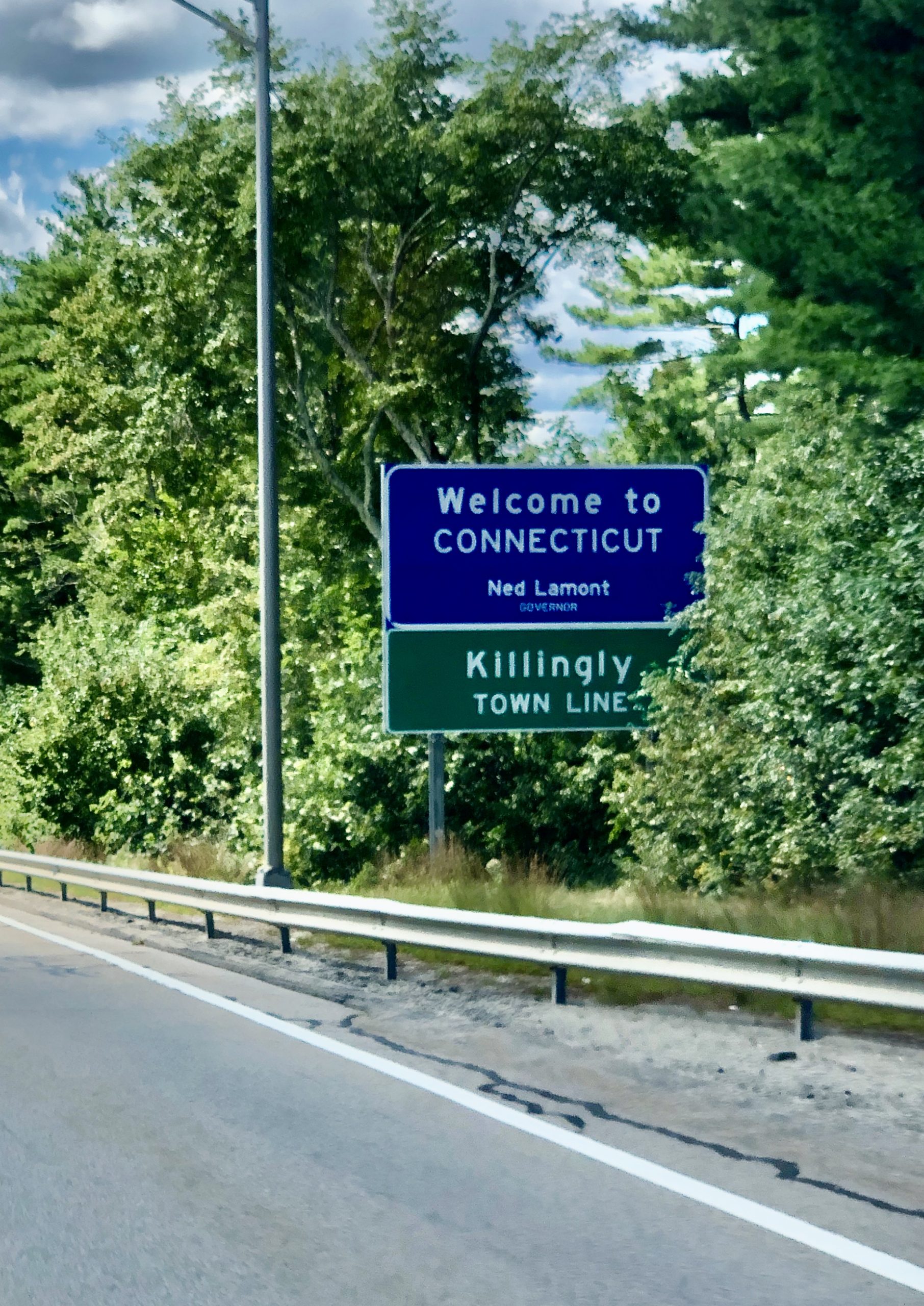
This is a nice campground near the seaport town of Mystic, CT. We only stayed here one night and didn’t explore the area but it was a very nice RV park and we would stay again.
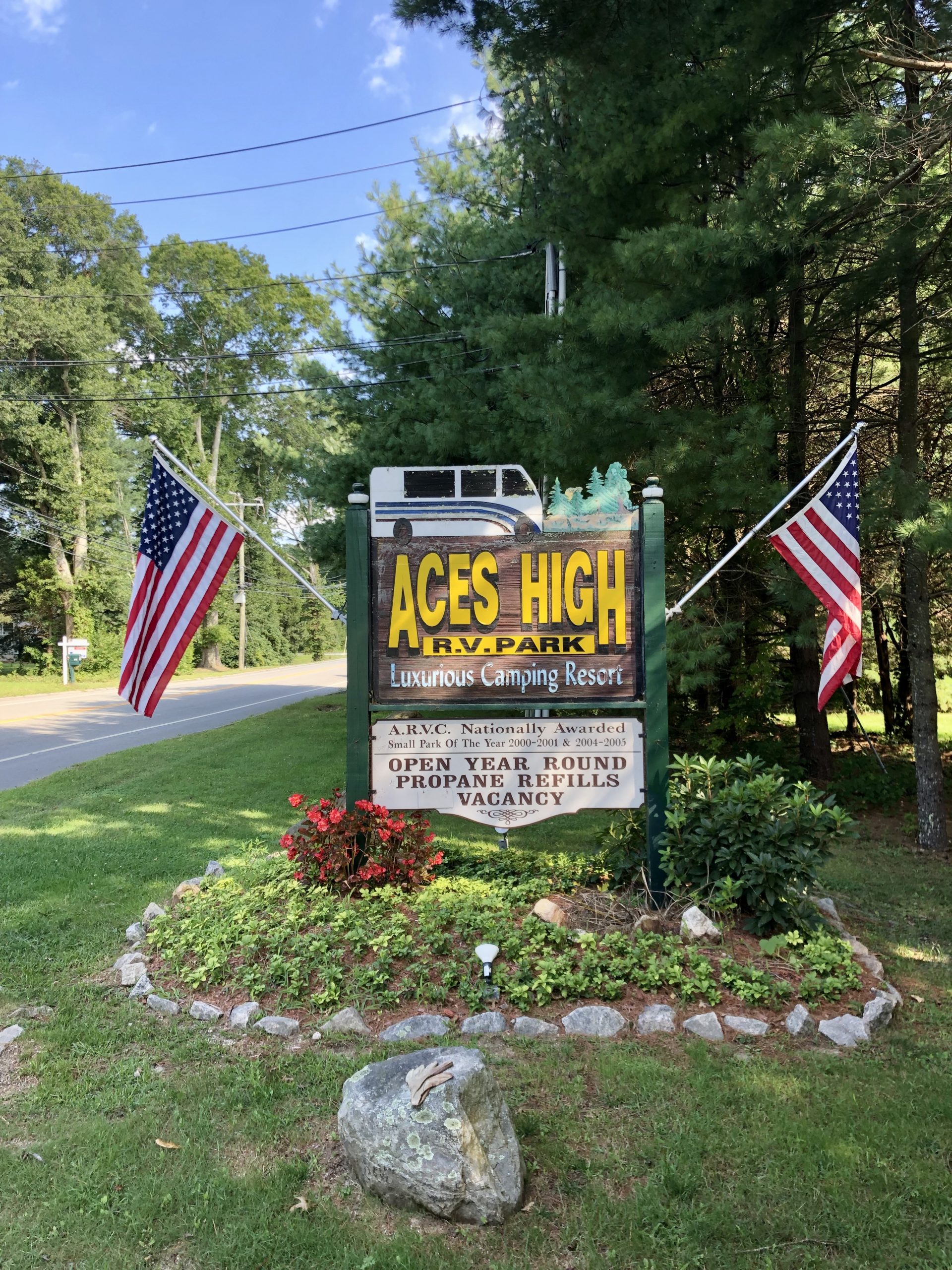
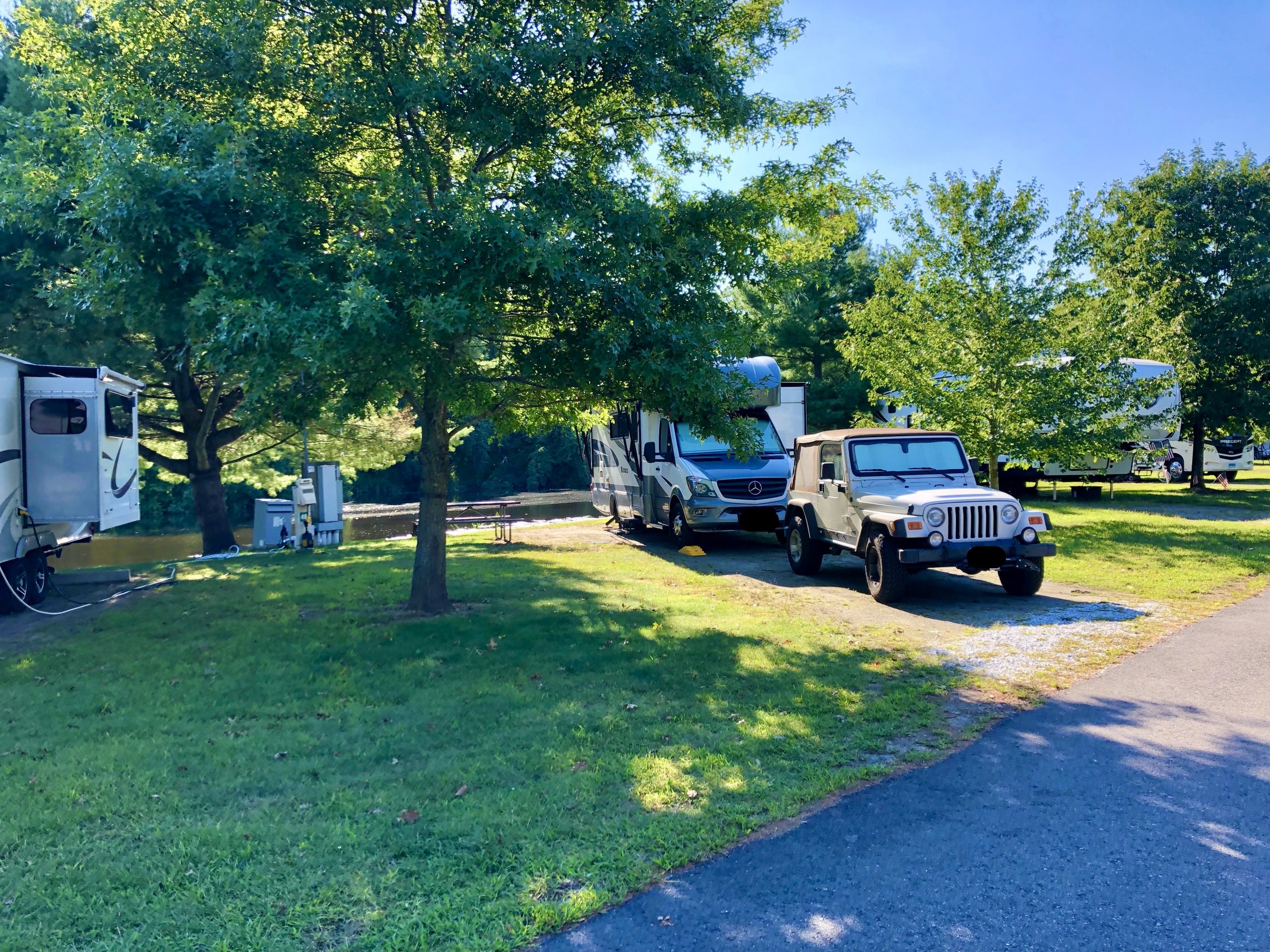
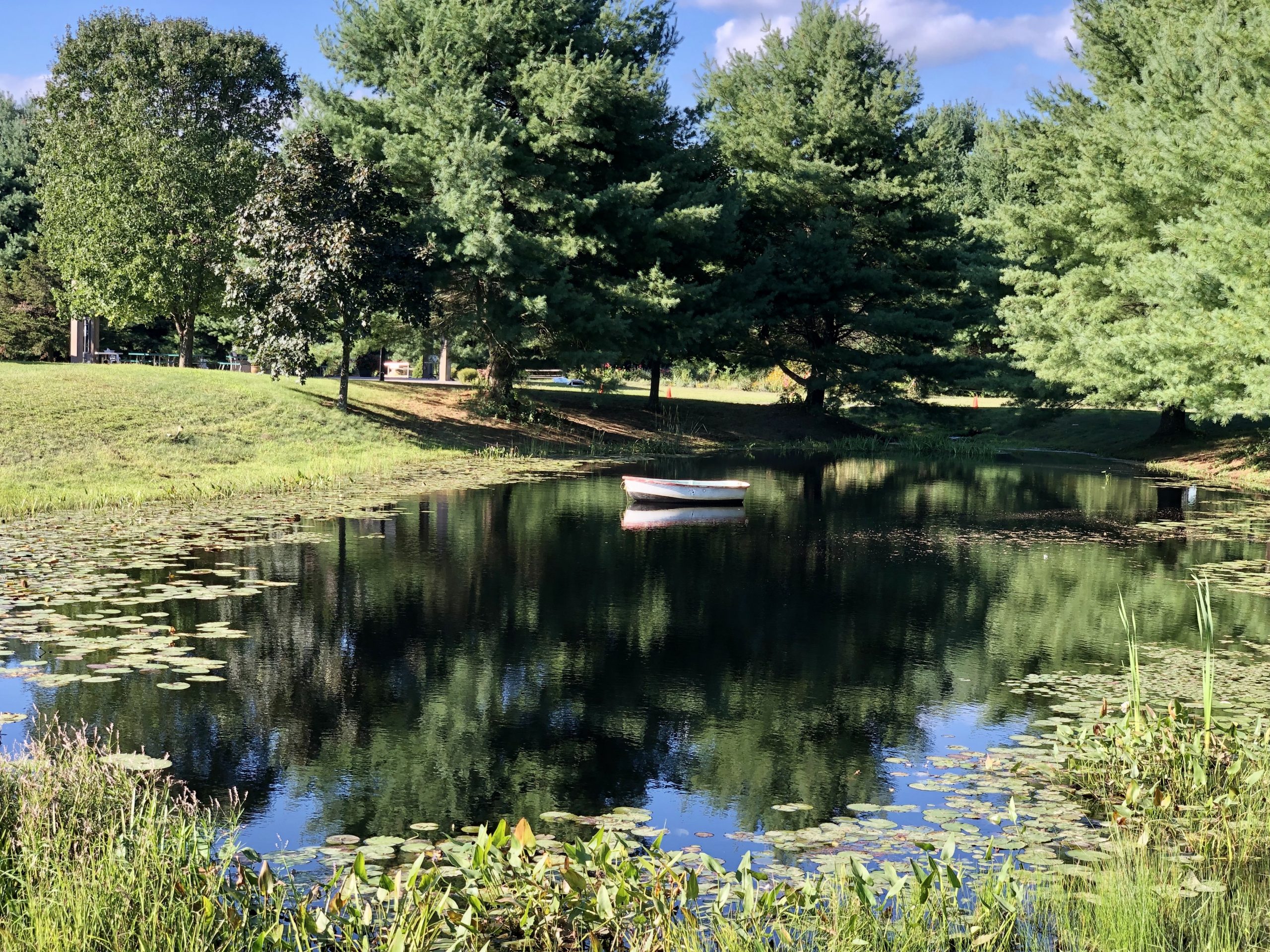
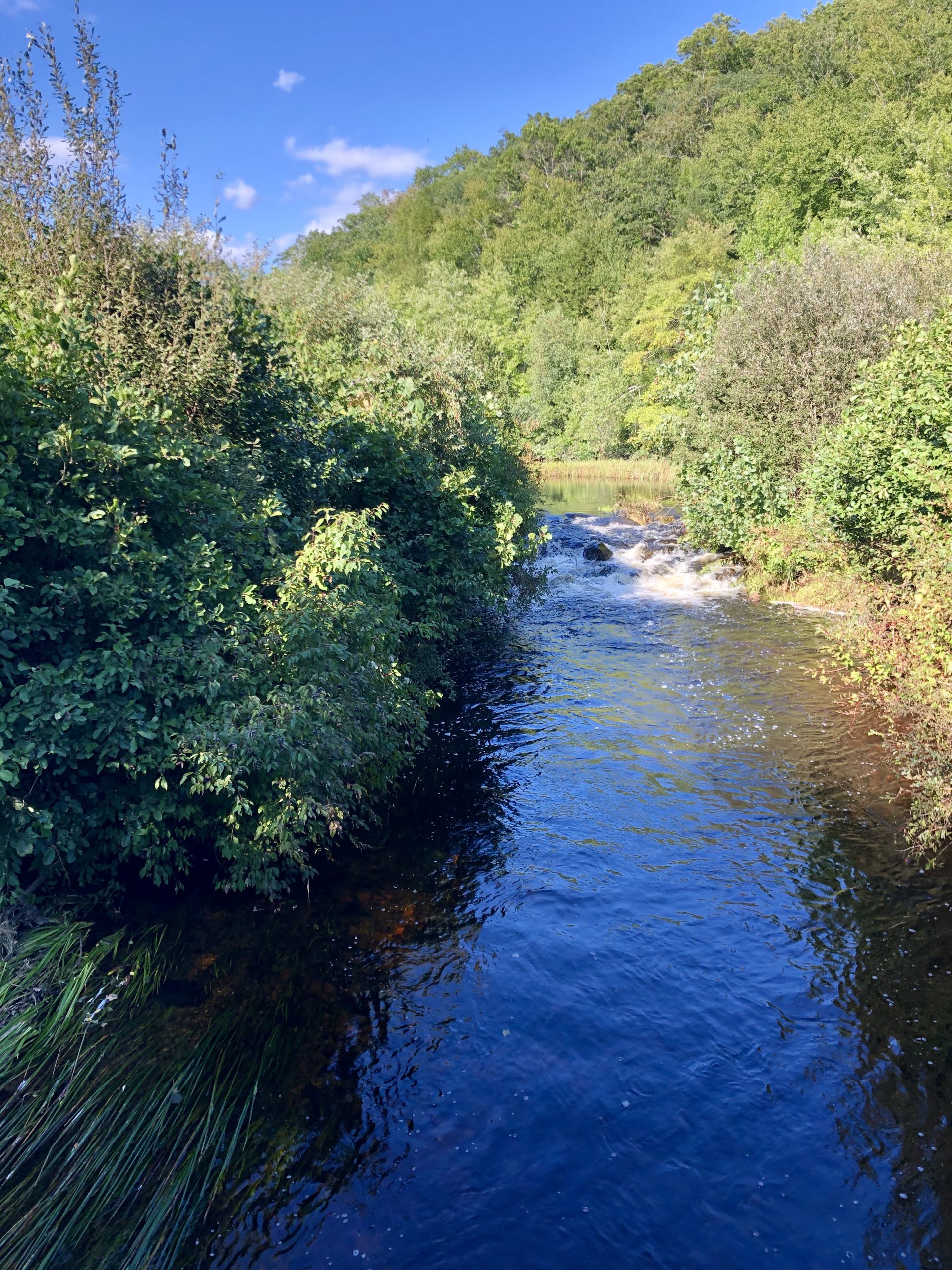
After Connecticut we continued southwest to Pennsylvania. We purposely took the long way around New York City because we didn’t want to deal with any city traffic in the RV. Along the way we drove right through Delaware Water Gap National Recreation Area, which “straddles a stretch of the Delaware River on the New Jersey and Pennsylvania border.” – Wikipedia
Our drive took us through about 40 miles (64 km) of this National Park site on our way to Valley Forge. It was a beautiful scenic drive.
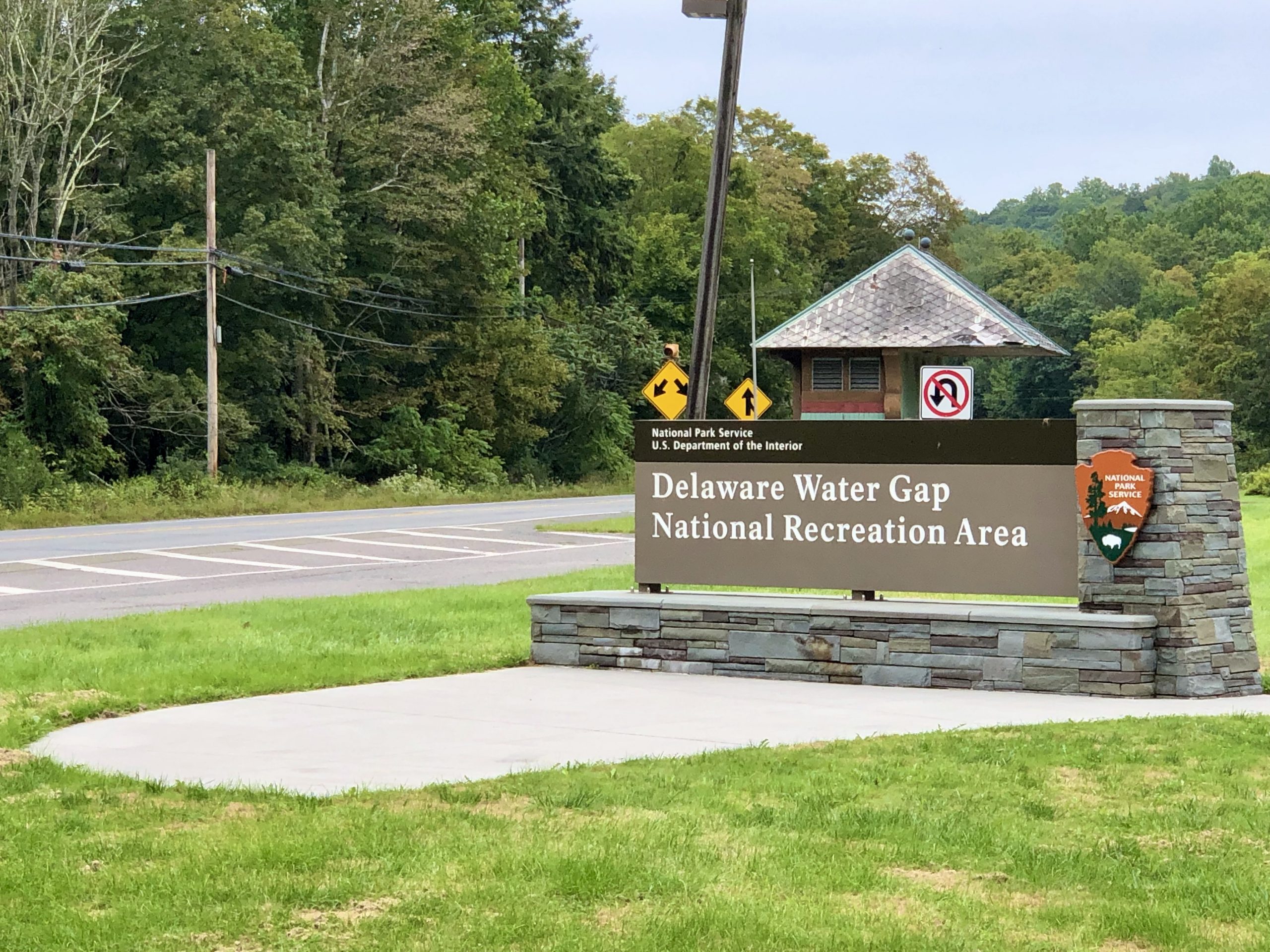
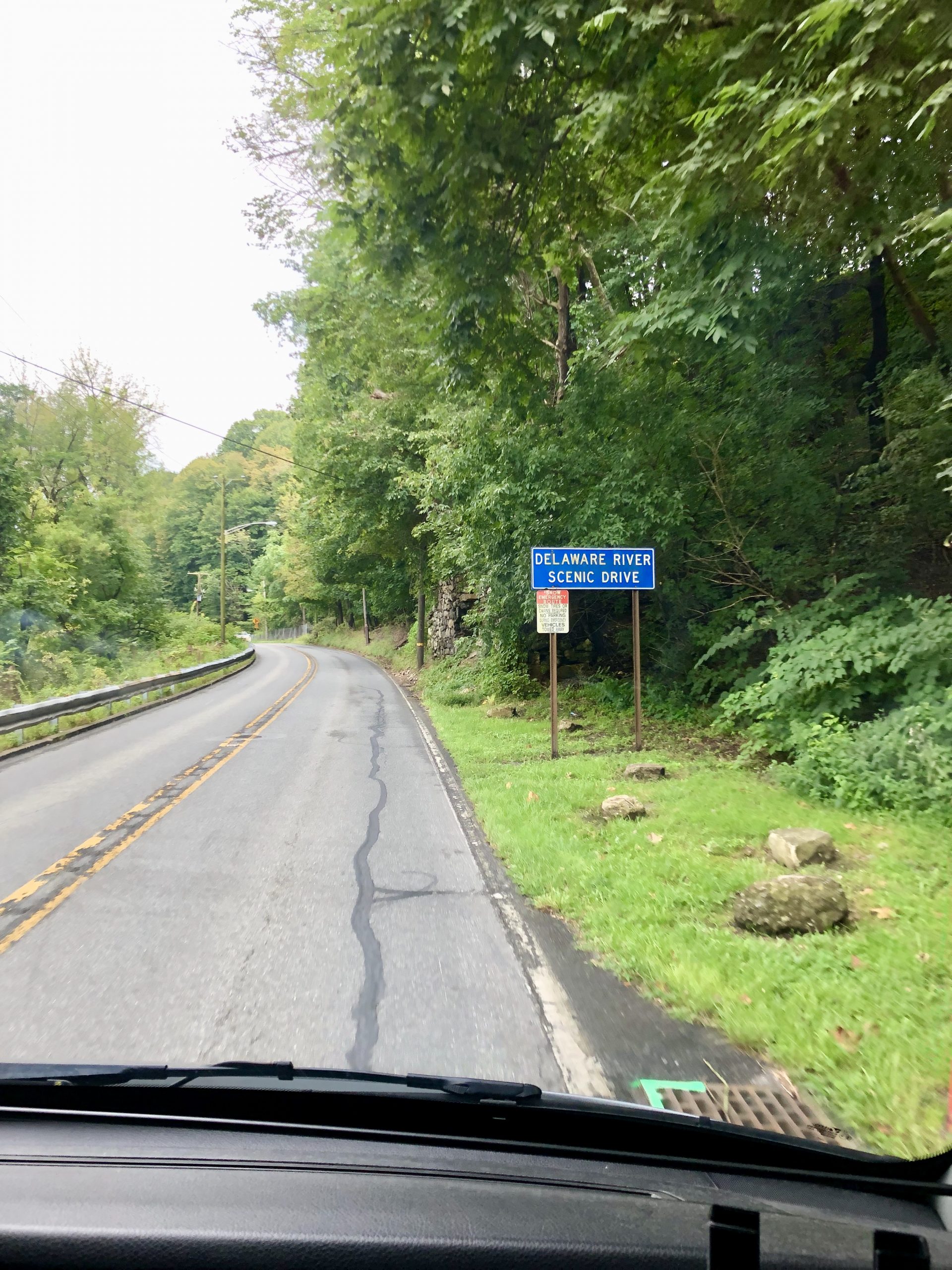
As we drove through we began to notice giant spider webs covering large sections of the trees. It turns out these are not spiders, they are web worms. According to the New Jersey Herald, “Web worms are not internet tunes that get in your head. Web worms are actually the species of caterpillar which have spun hundreds of silken blobs in the trees along one of the busiest roads in the Delaware Water Gap National Recreation Area.”
The article goes on to say, “The webs being spun are the insects method of protecting themselves from predators, except maybe for bears looking for a quick snack within reach as they forage to fatten up for the winter. As the caterpillars leave the nests, preparing to pupate, they become food for migrating birds.”
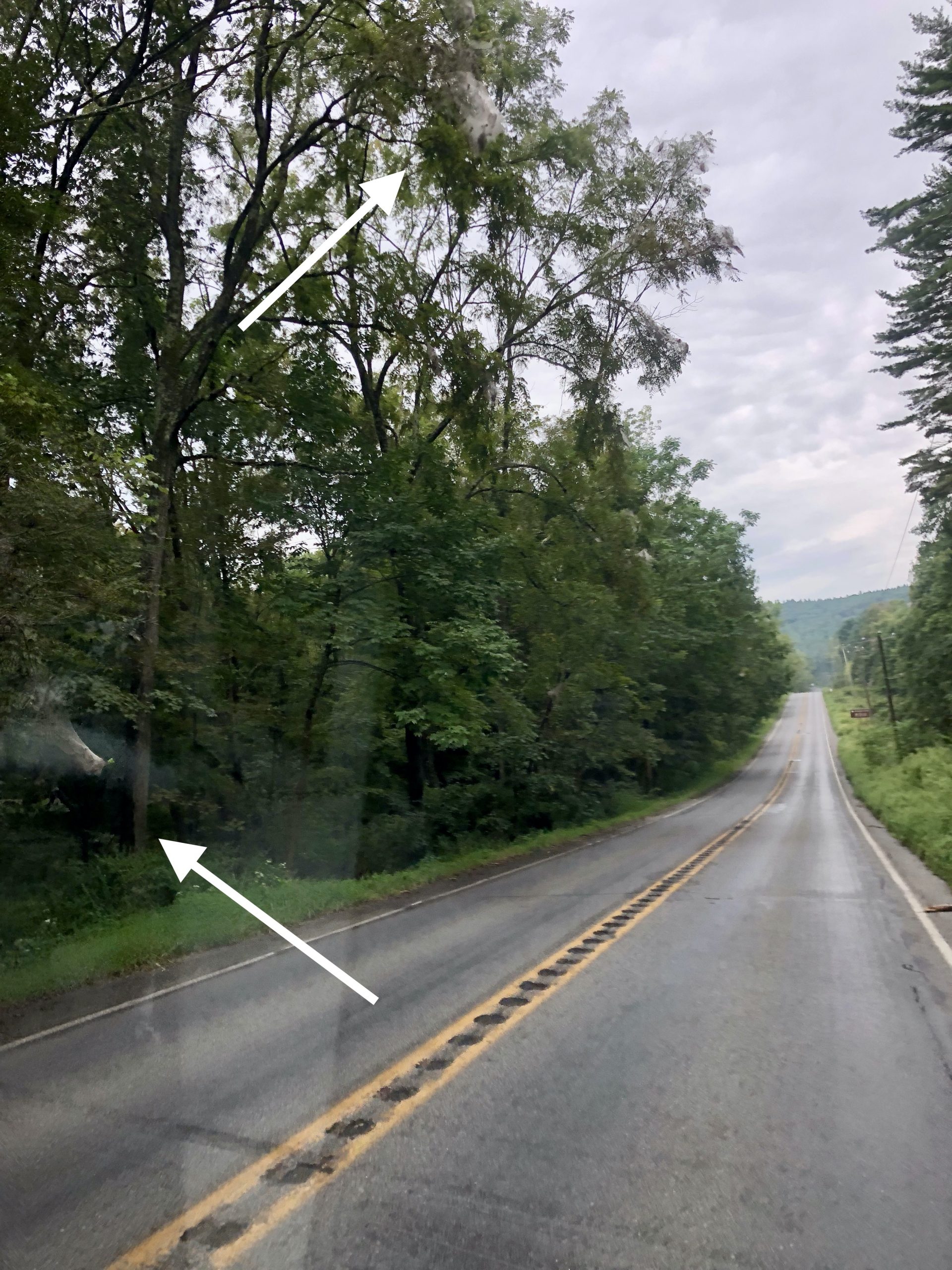
We spent the night at another great Harvest Host, Bishop Estate Vineyard and Winery. Their brochure does a great job of explaining the story of this vineyard.
“Located in Bucks County, Pennsylvania, this charming farm has been in the Bishop family for over 100 years. Previously a chicken and a dairy farm, now the property is transformed into a growing vineyard and winery.”
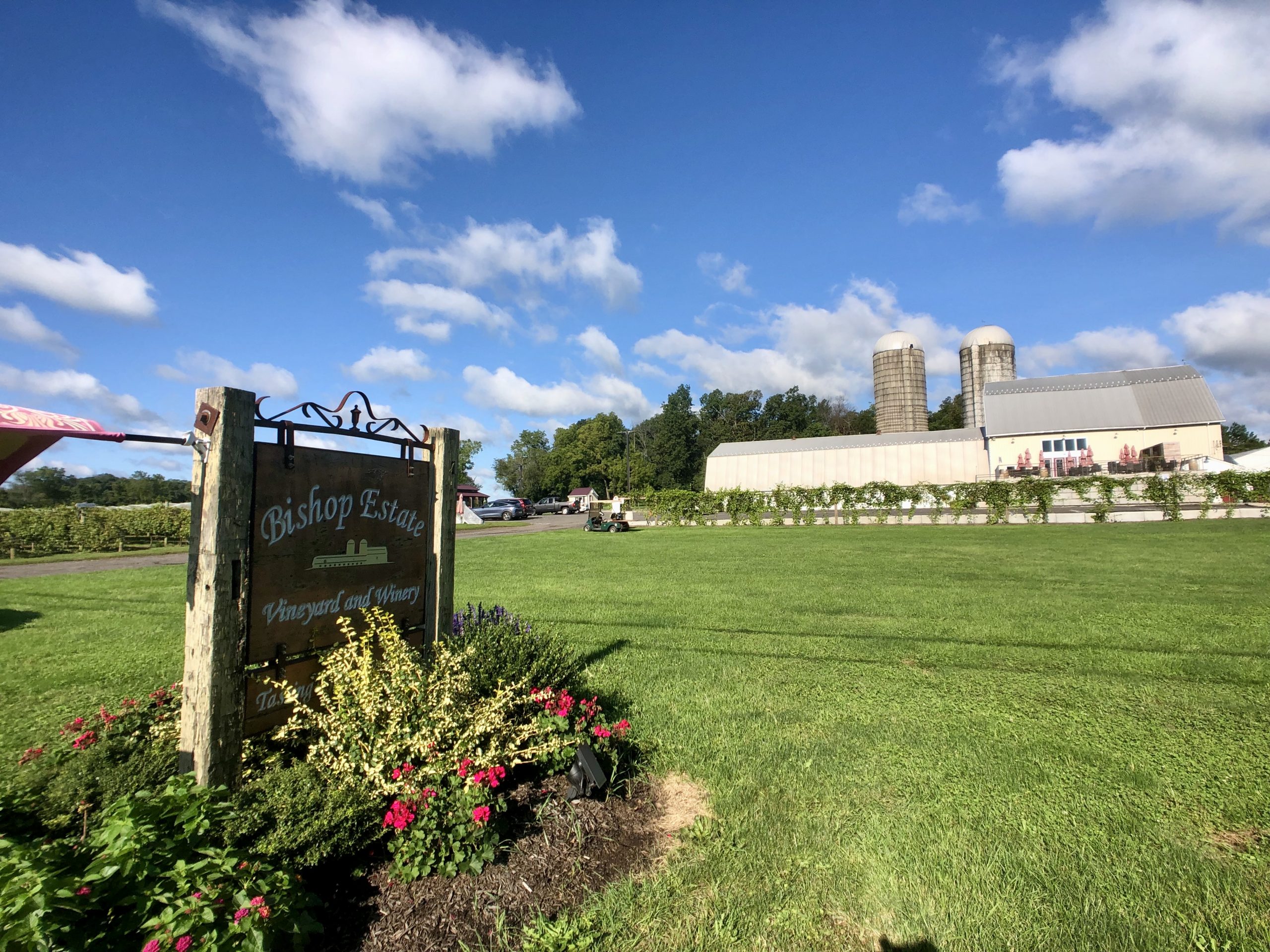
Matt, the tasting room manager, helped us select wines for our tasting. Ultimately, Joel ended up with a local beer and I ended up with a couple of bottles of wine to take on the road.
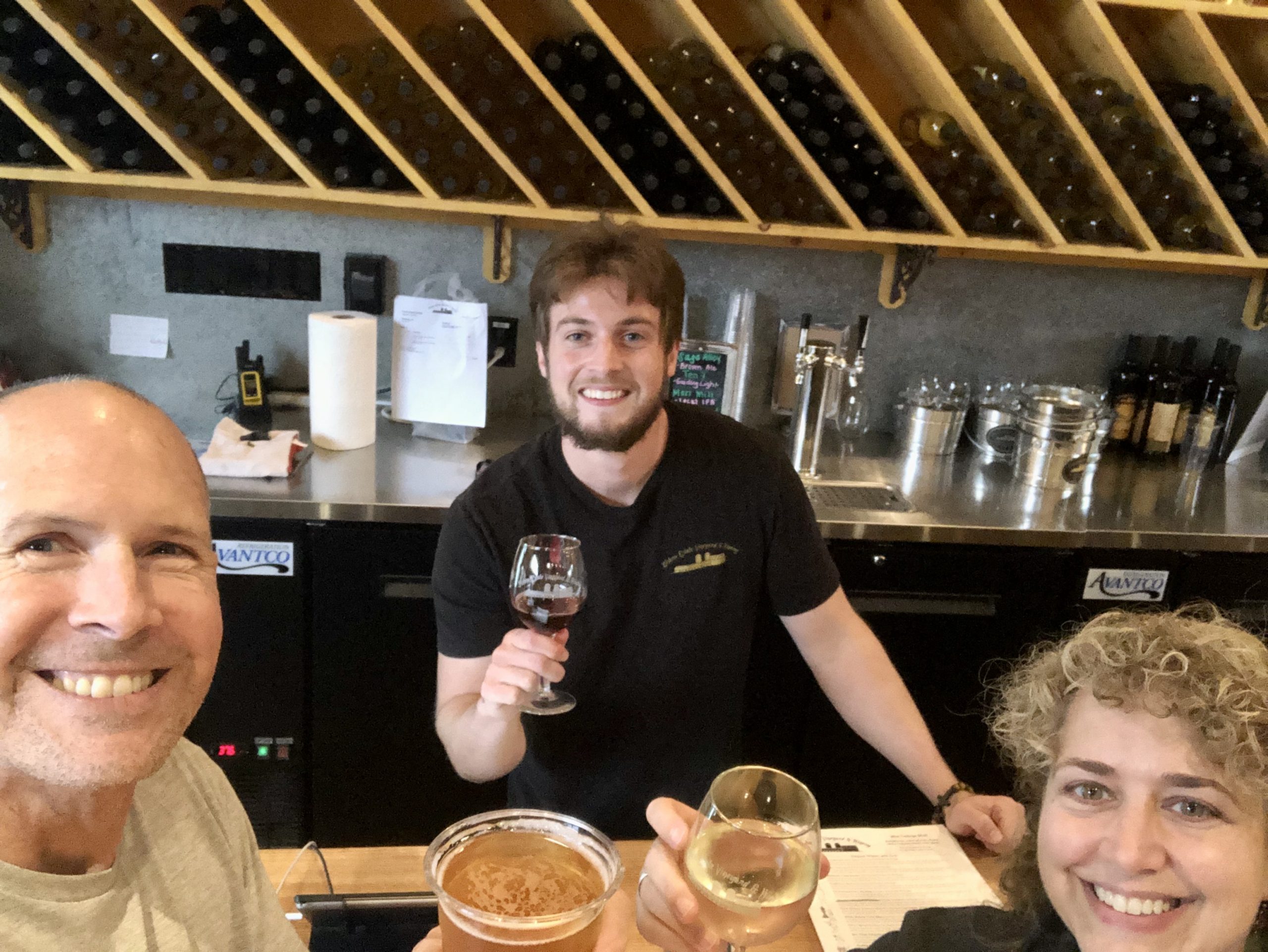
As the tasting room was closing we met some wonderful women who were sitting on the patio enjoying their wine with some food they brought. We ended up talking to them well past closing time. This is one of the things we like best about Harvest Hosts, we meet such great people everywhere we go.
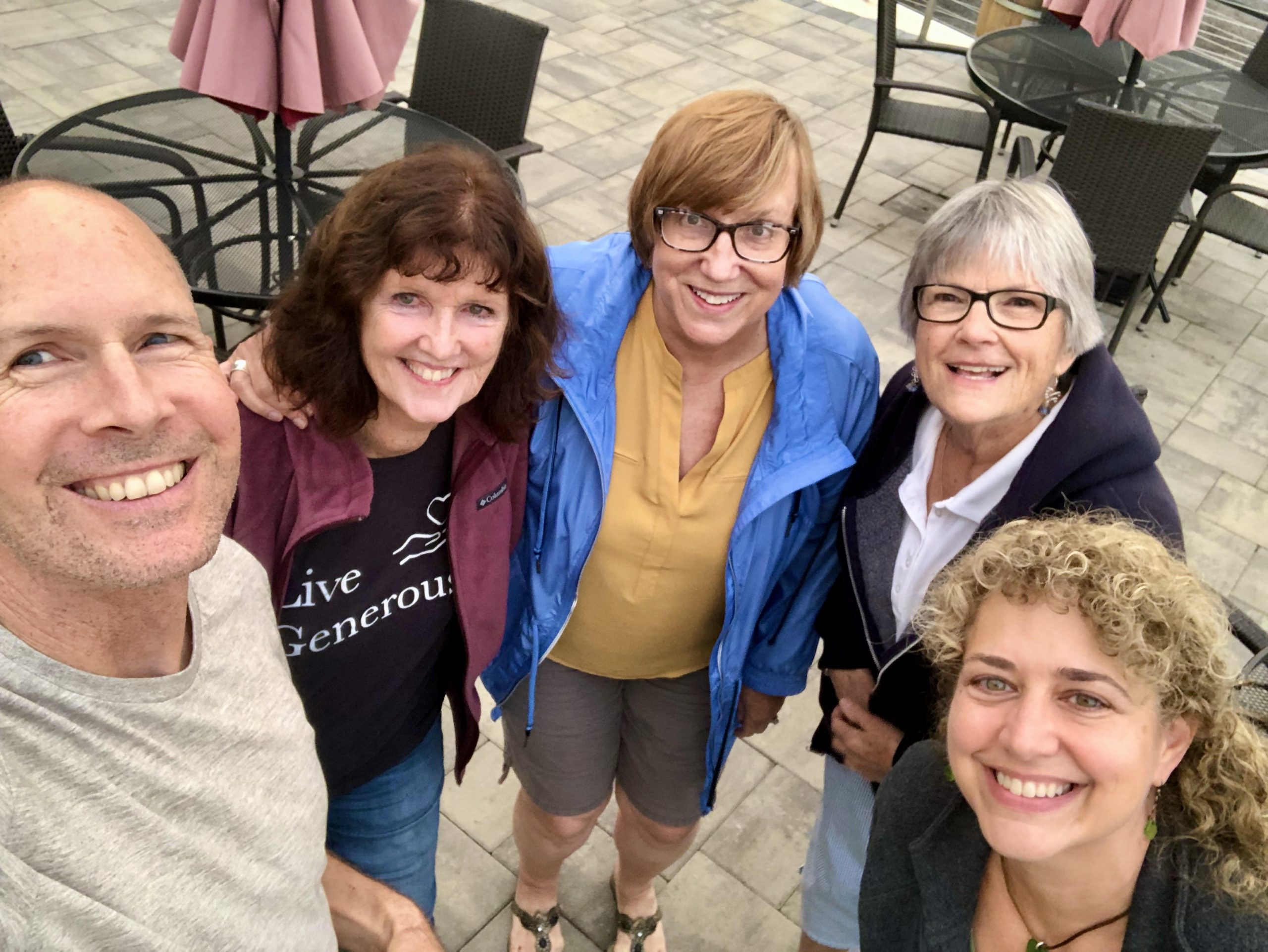
There was a beautiful sunset that night though I didn’t think to take a picture until it was almost over.
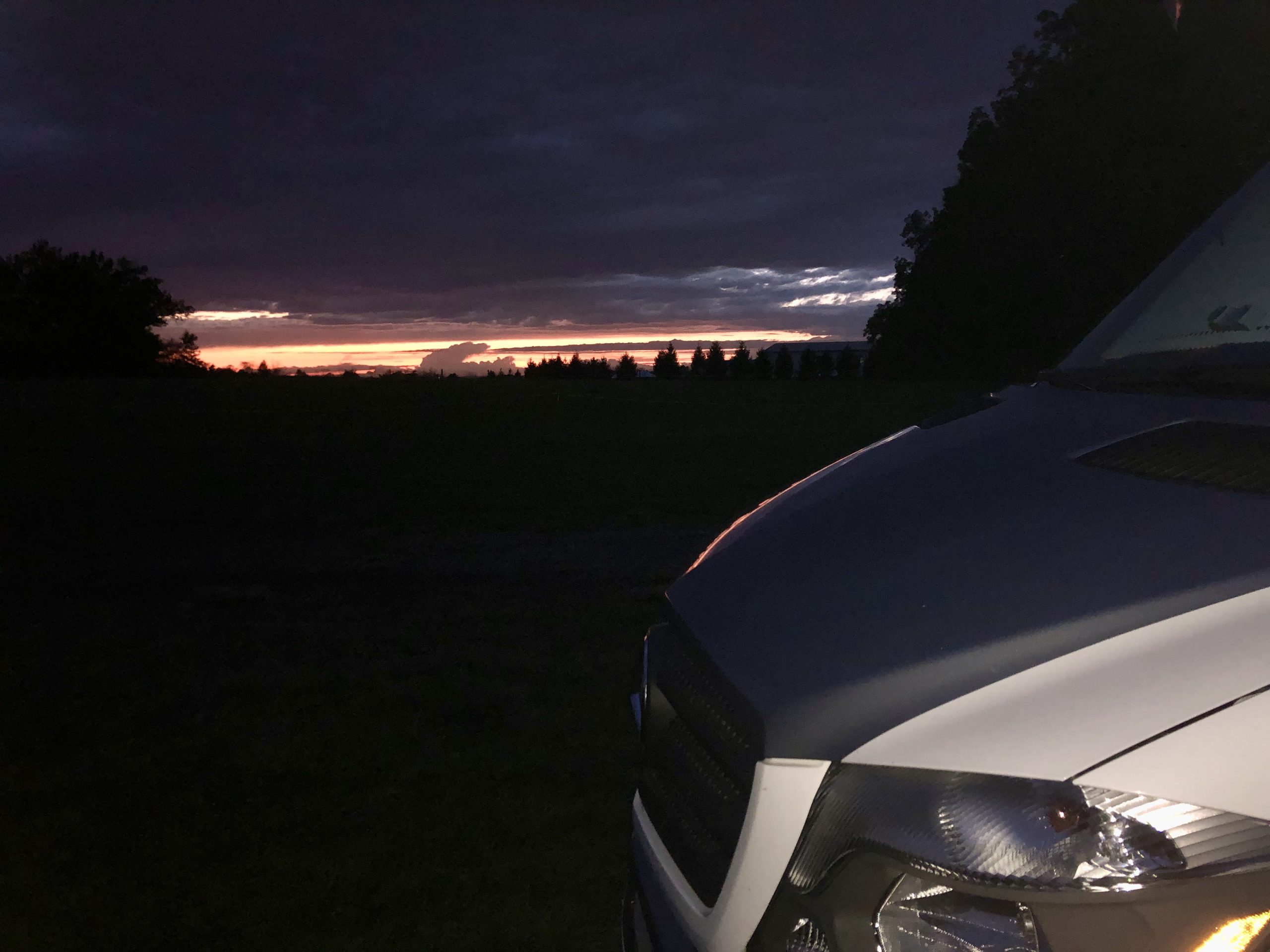

One cute thing, the wine names are funny (Bug House, Feeling Winey and Tipsy Cow) with chess or farm themes.
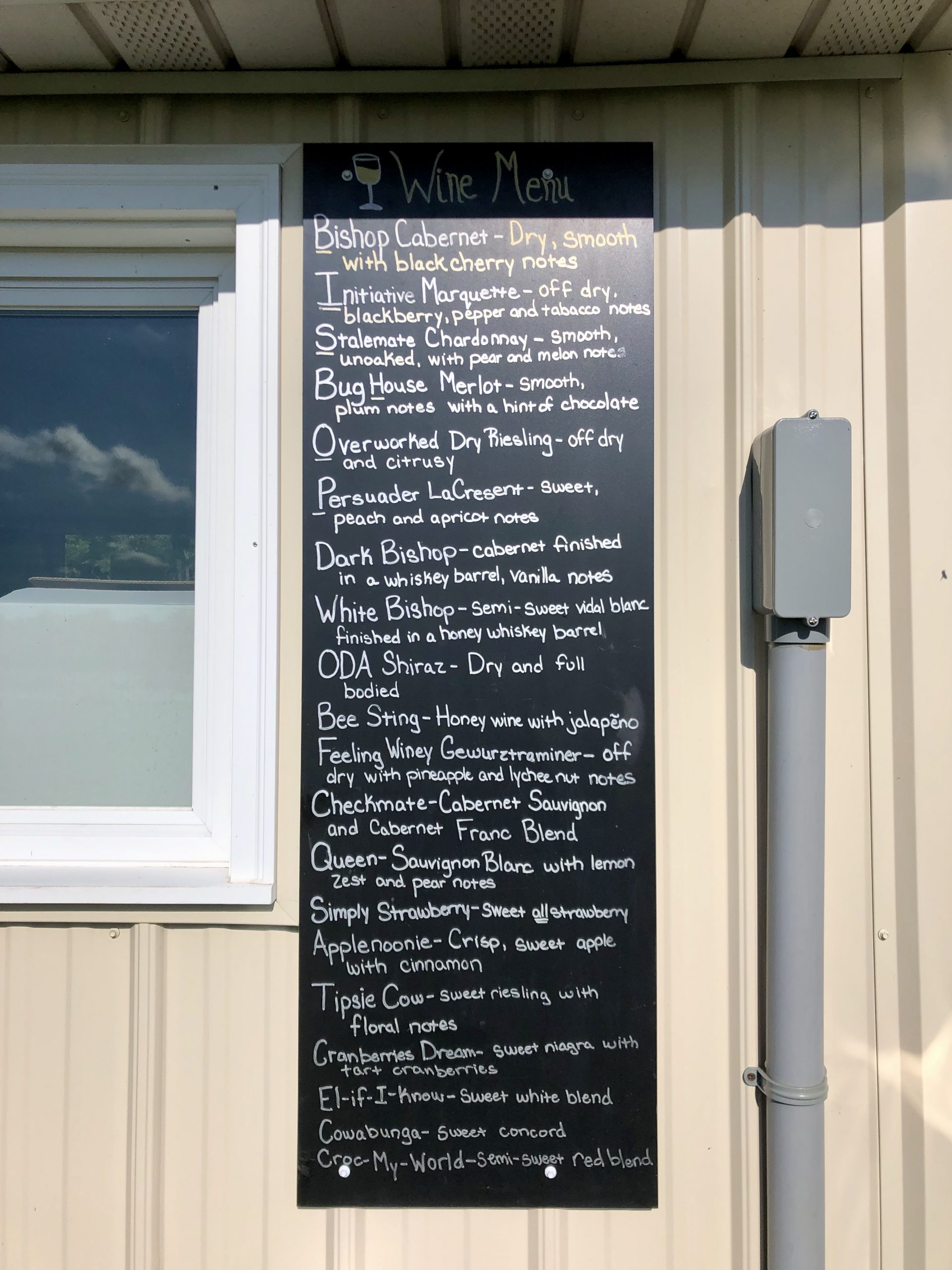
A short drive north of Philadelphia, PA, is the Valley Forge National Historical Park. “The six-month encampment of General George Washington’s Continental Armyat Valley Forge in the winter of 1777-1778 was a major turning point in the American Revolutionary War. While conditions were notoriously cold and harsh and provisions were in short supply, it was at the winter camp where George Washington proved his mettle and, with the help of former Prussian military officer Friedrich Wilhelm Baron von Steuben, transformed a battered Continental Army into a unified, world-class fighting force capable of beating the British.” – History.com
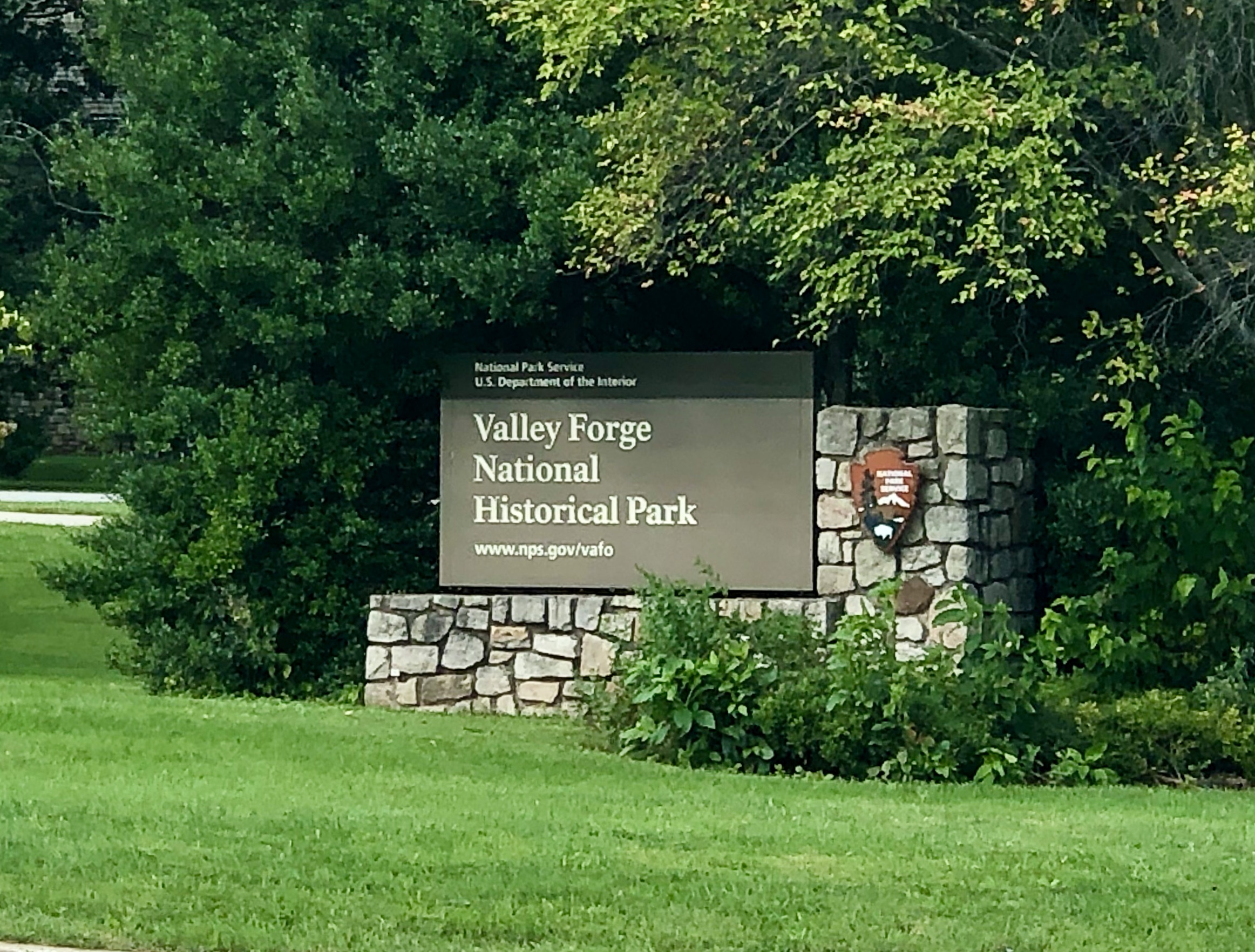
After speaking to a volunteer at the visitor center, we decided to take a self-guided encampment tour. We only did a partial section (about 2 miles) as we were walking. Normally you could drive the entire 10-mile (16 km) loop, however there was a section under construction and we couldn’t fit through the detour since we had the RV with us.
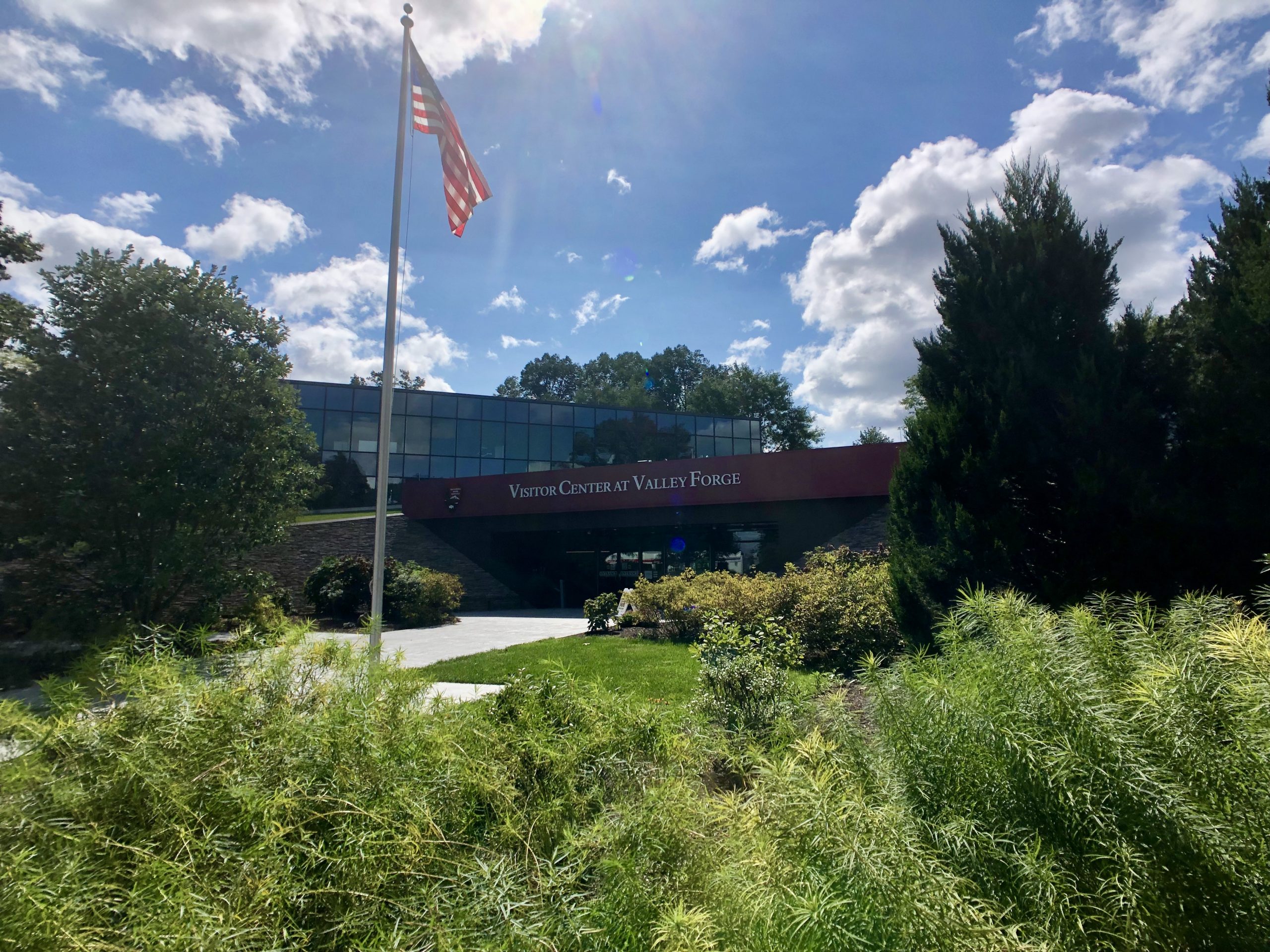
The self-guided tour began at the visitor center which is on the eastern end of the Grand Parade field. It heads south around the field to the first stop. “Reconstructed army huts on the site General Muhlenberg’s brigade provide glimpses into soldiers’ lives. A nearby redoubt (a type of defensive earthwork) highlights the importance of camp security.” – NPS (National Park Services)
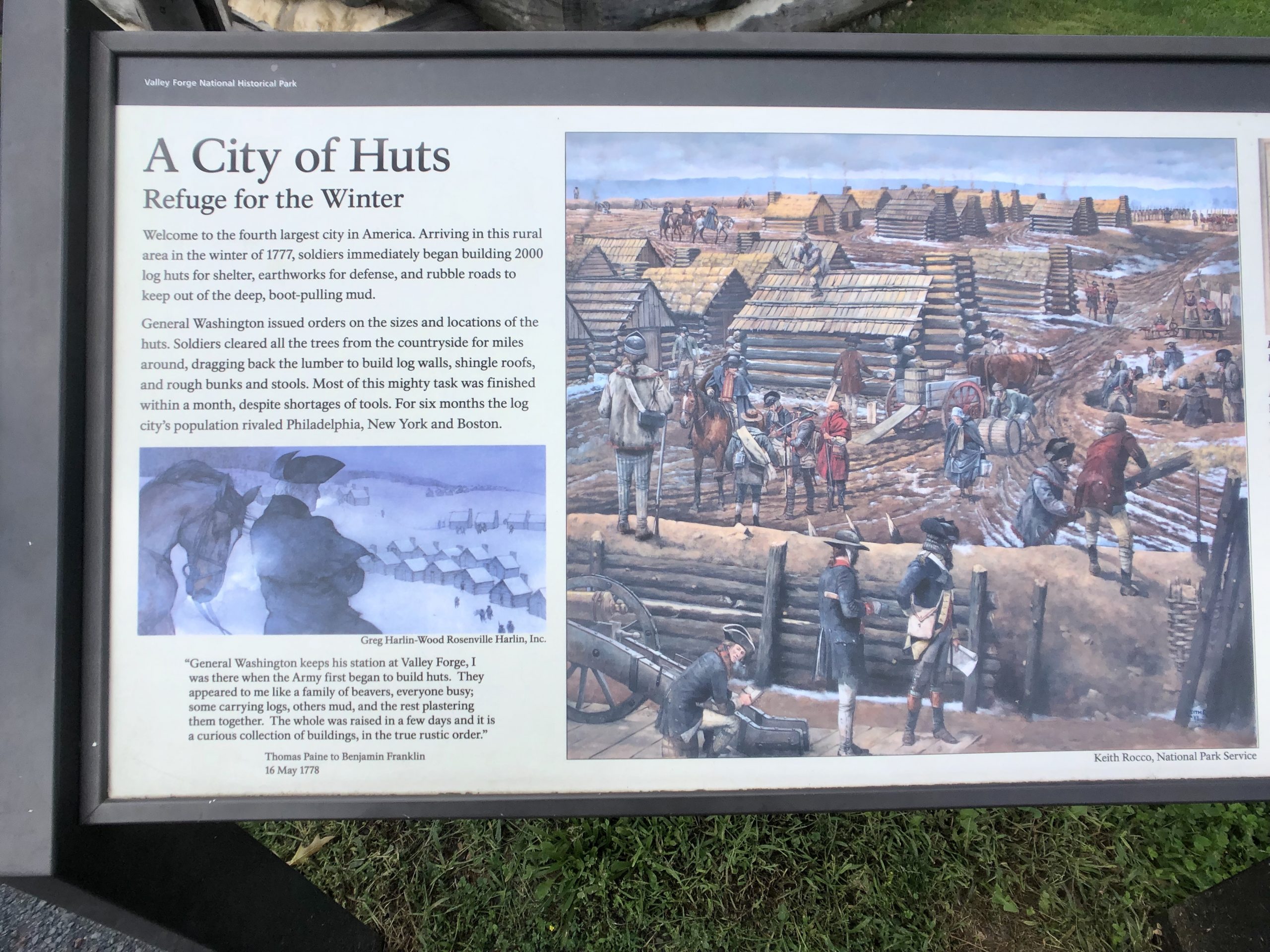
“Washington picked the spot because it was close enough to keep an eye on British troops sheltering in Philadelphia, yet far enough away to prevent a surprise attack on his own Continental Army. Washington and his men would remain at the camp for approximately six months, from December 1777 until June 1778.” – History.com
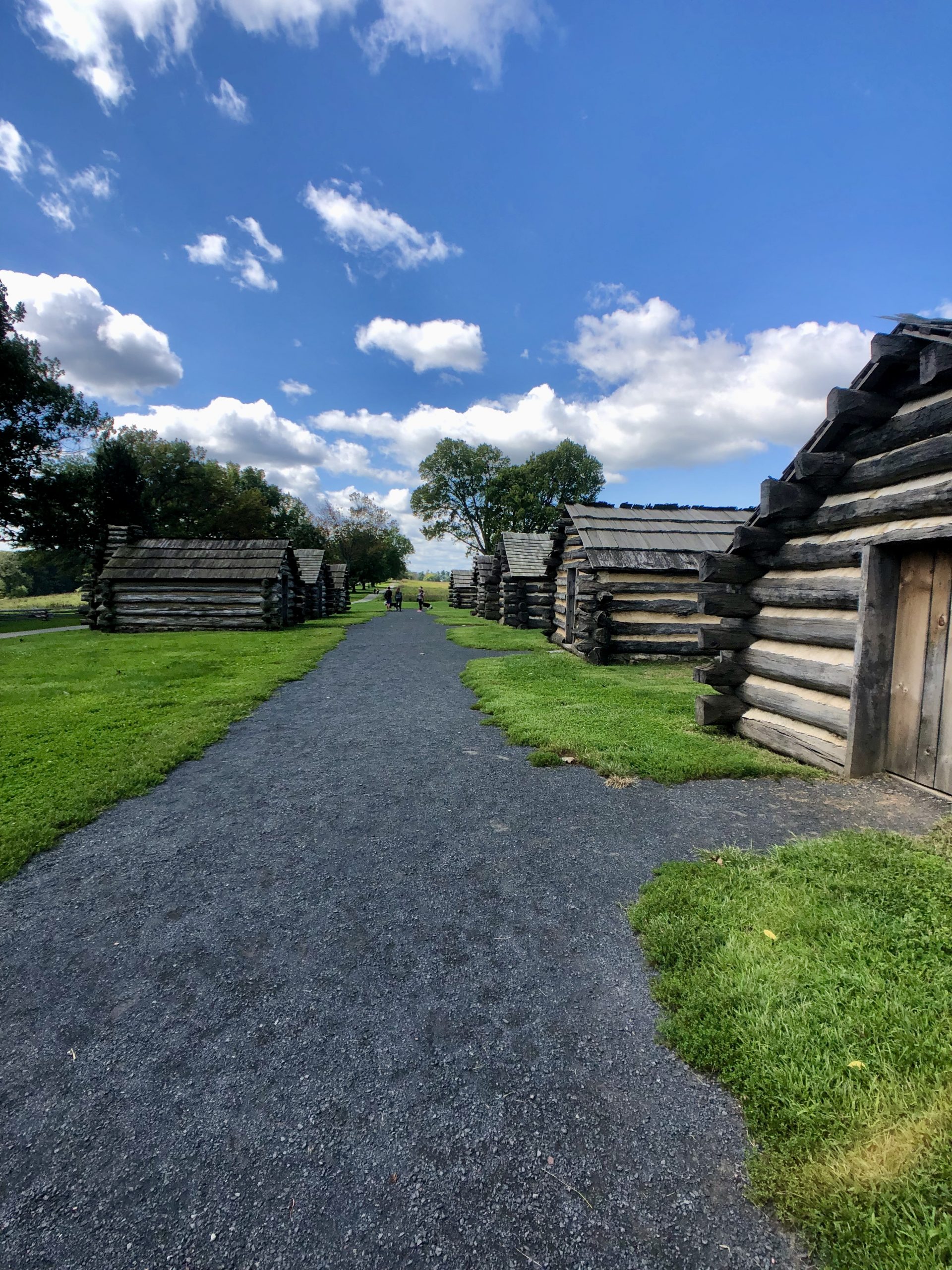
“Washington directed that each hut measure approximately 14 feet by 16 feet. Sometimes the soldiers’ families joined them in the space as well. Soldiers were instructed to search the countryside for straw to use as bedding, since there were not enough blankets for everyone.” – History.com
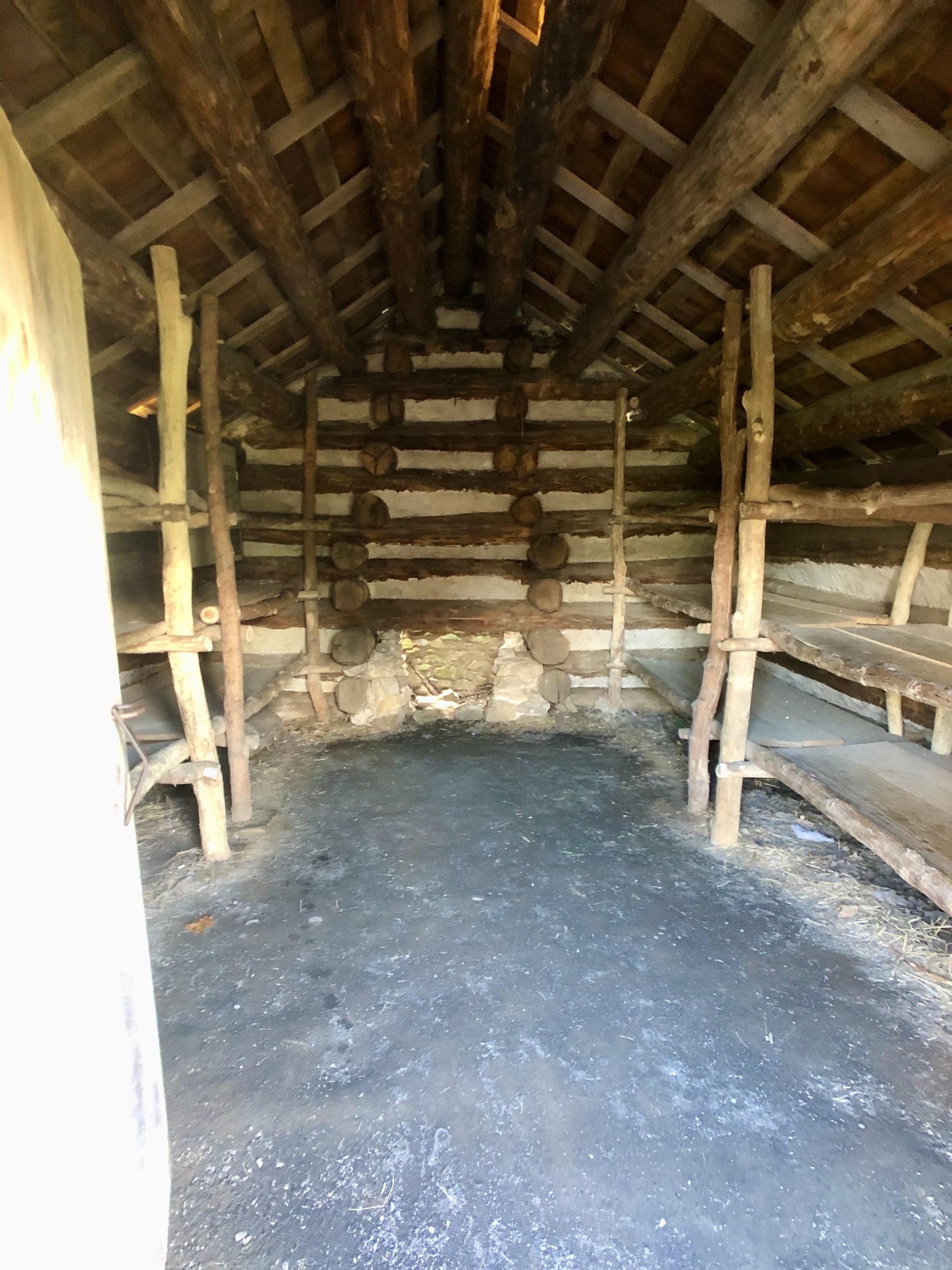
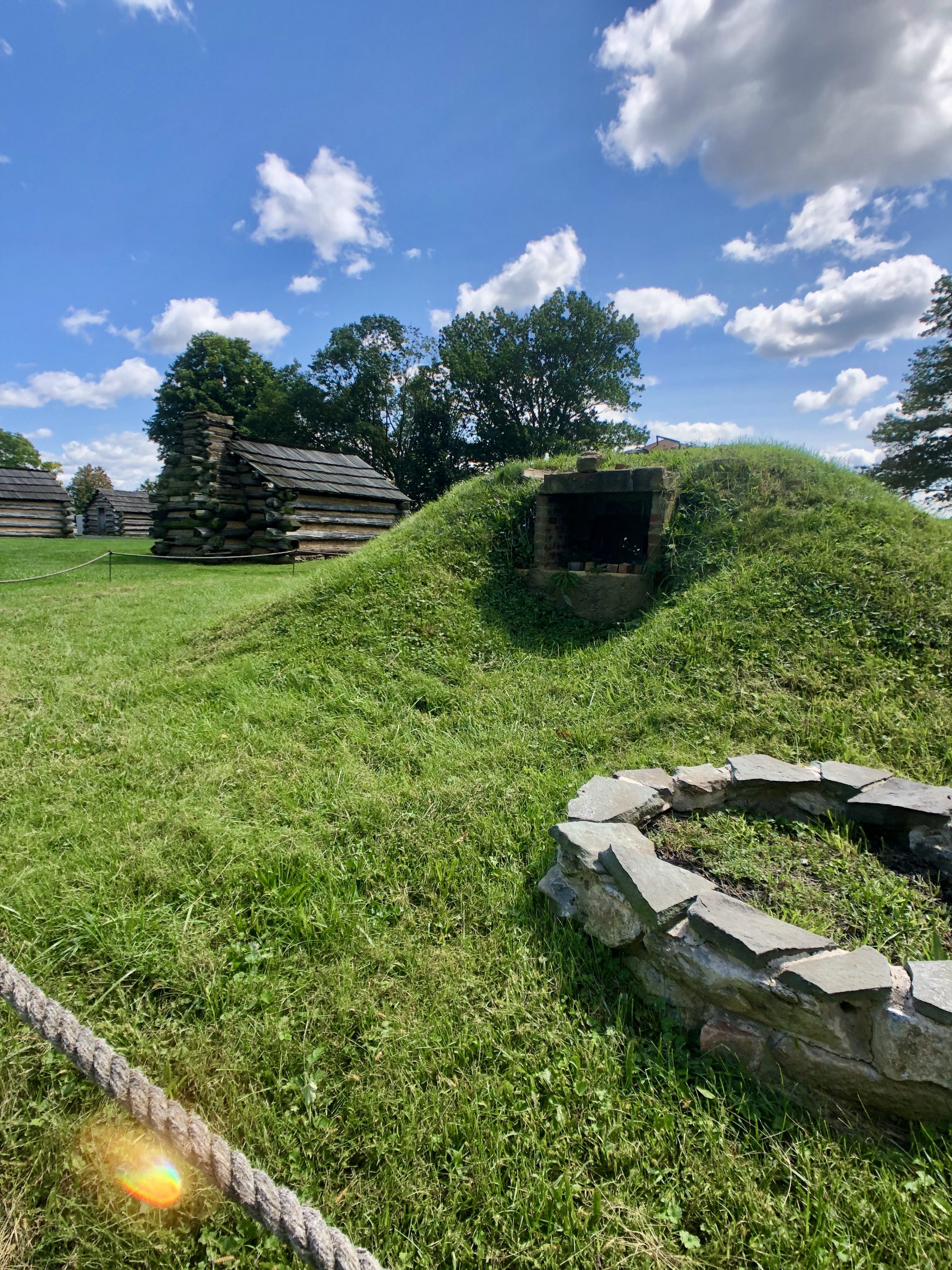
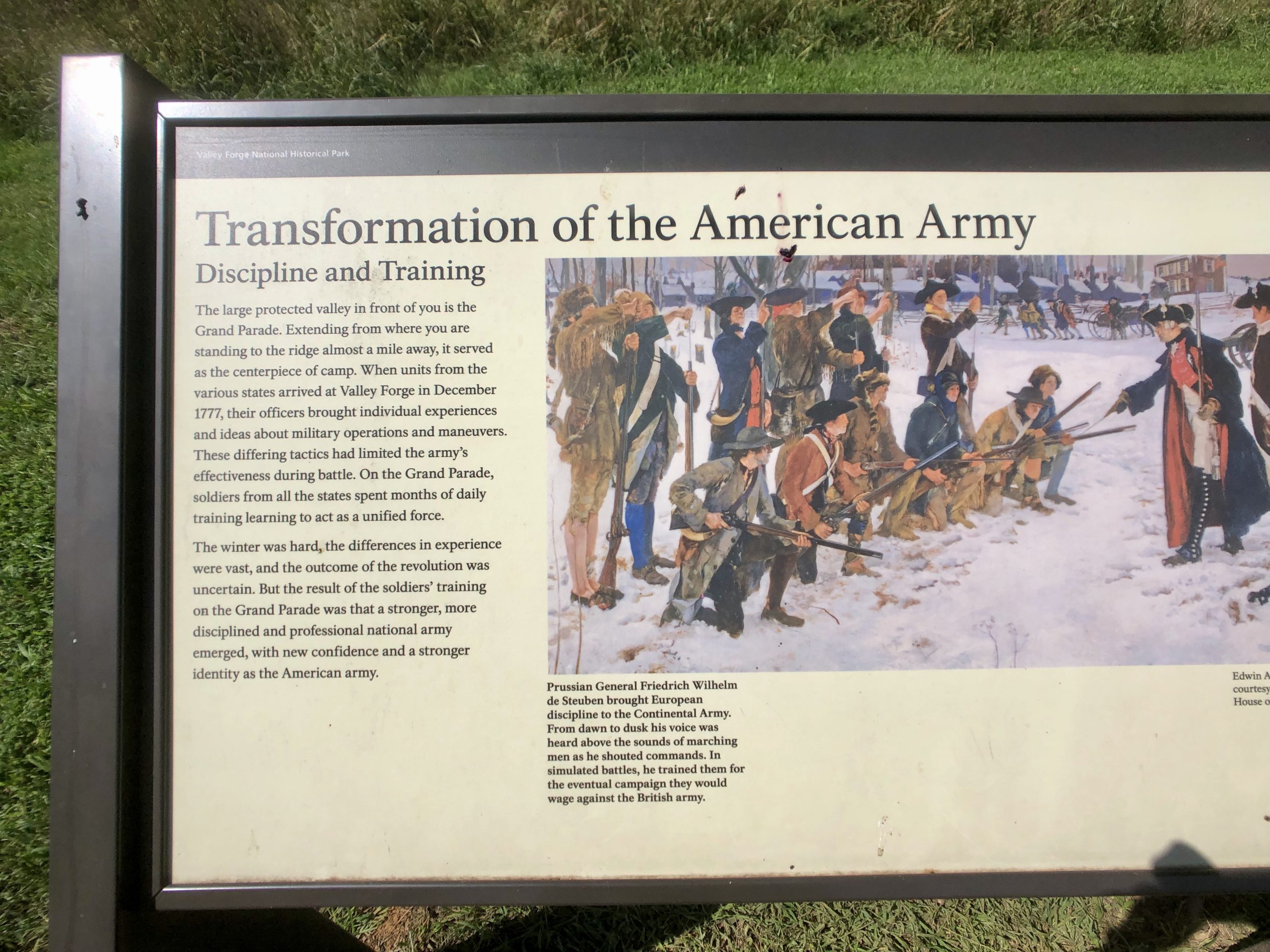
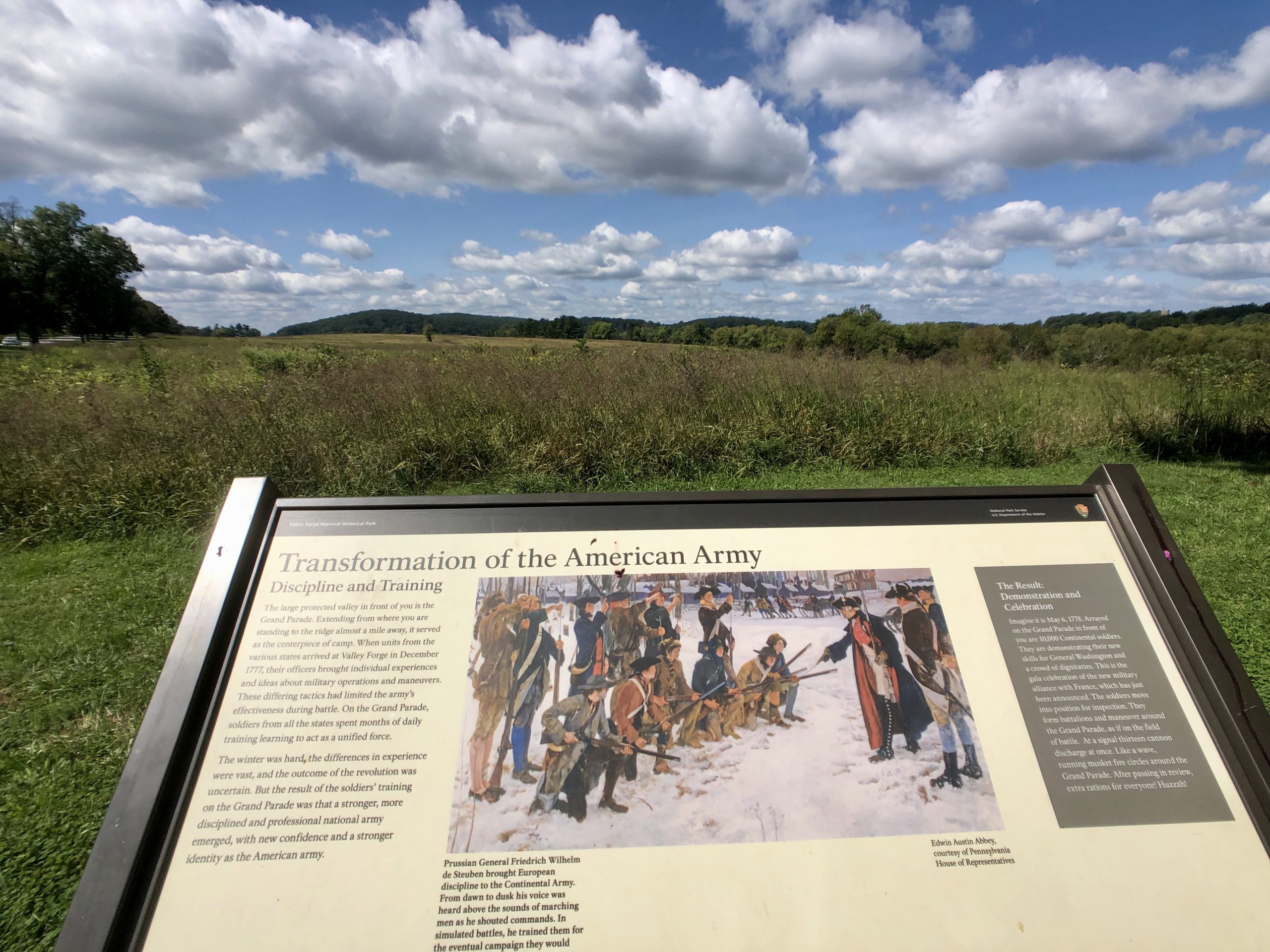
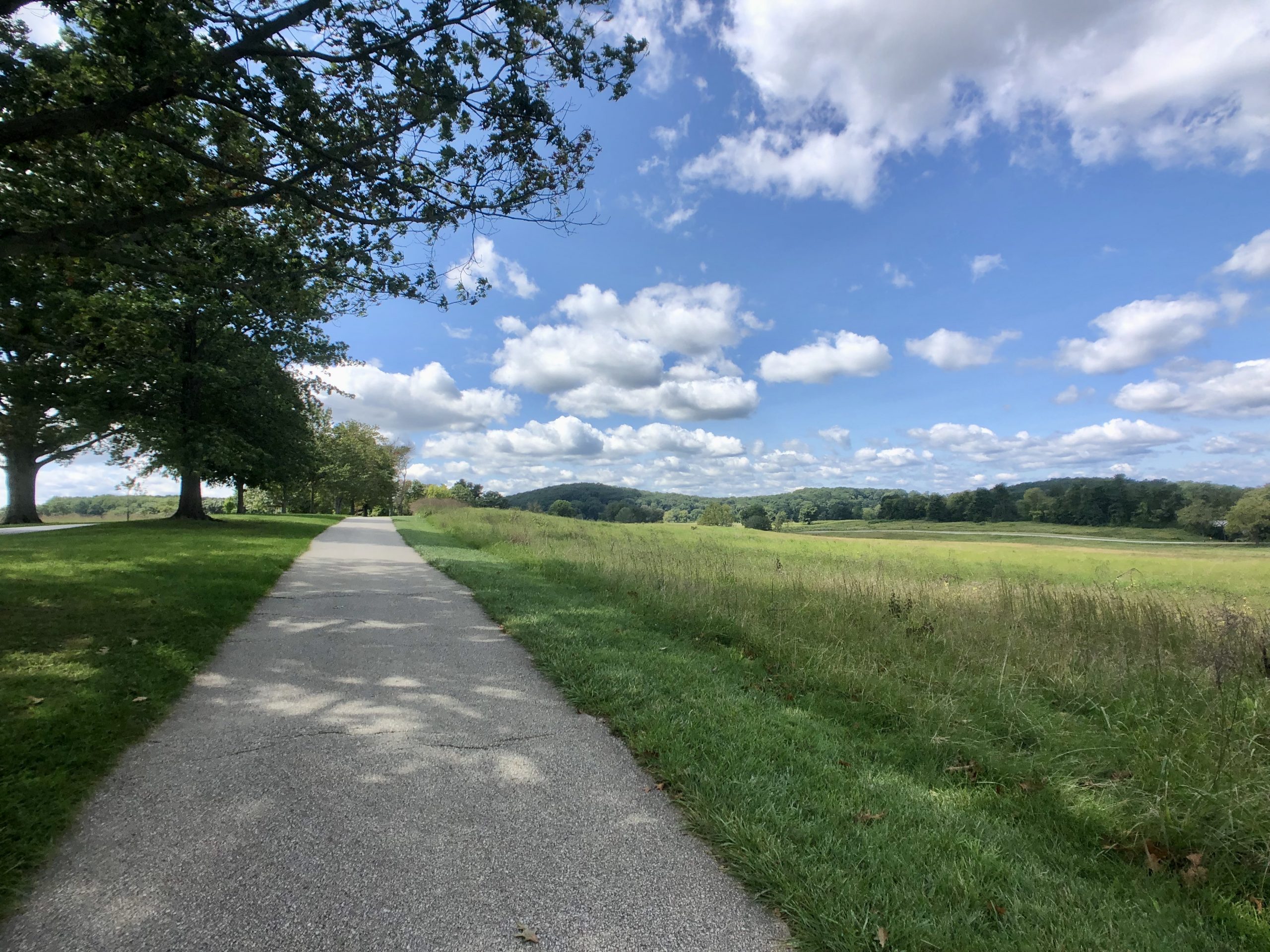
There were many monuments around the Grand Parade dedicated to soldiers from different states. The picture below is a memorial dedicated to the soldiers from Massachusetts.
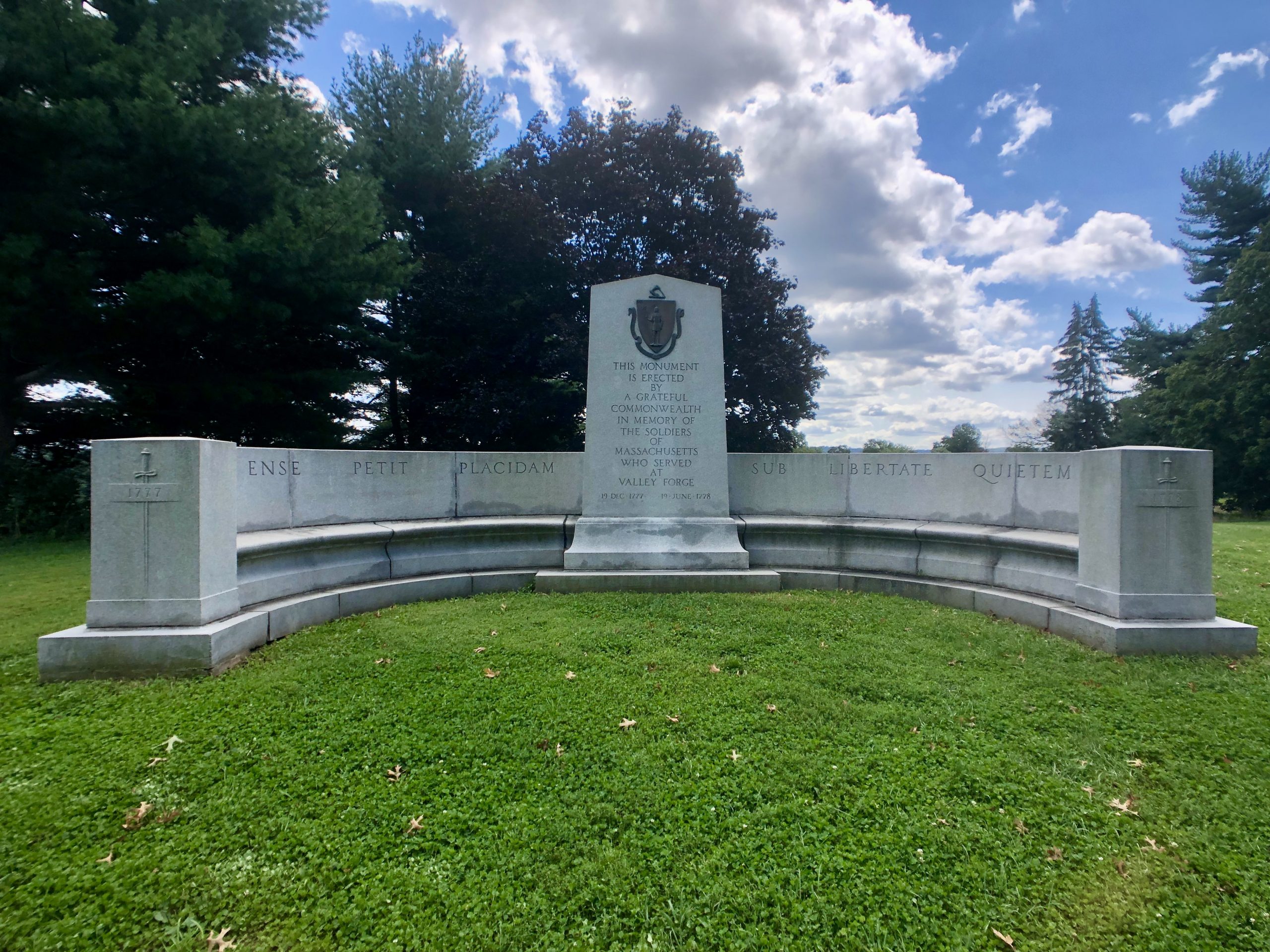
“Dedicated in 1917, the National Memorial Arch honors the soldiers’ perseverance and expresses hope for future generations.” – NPS
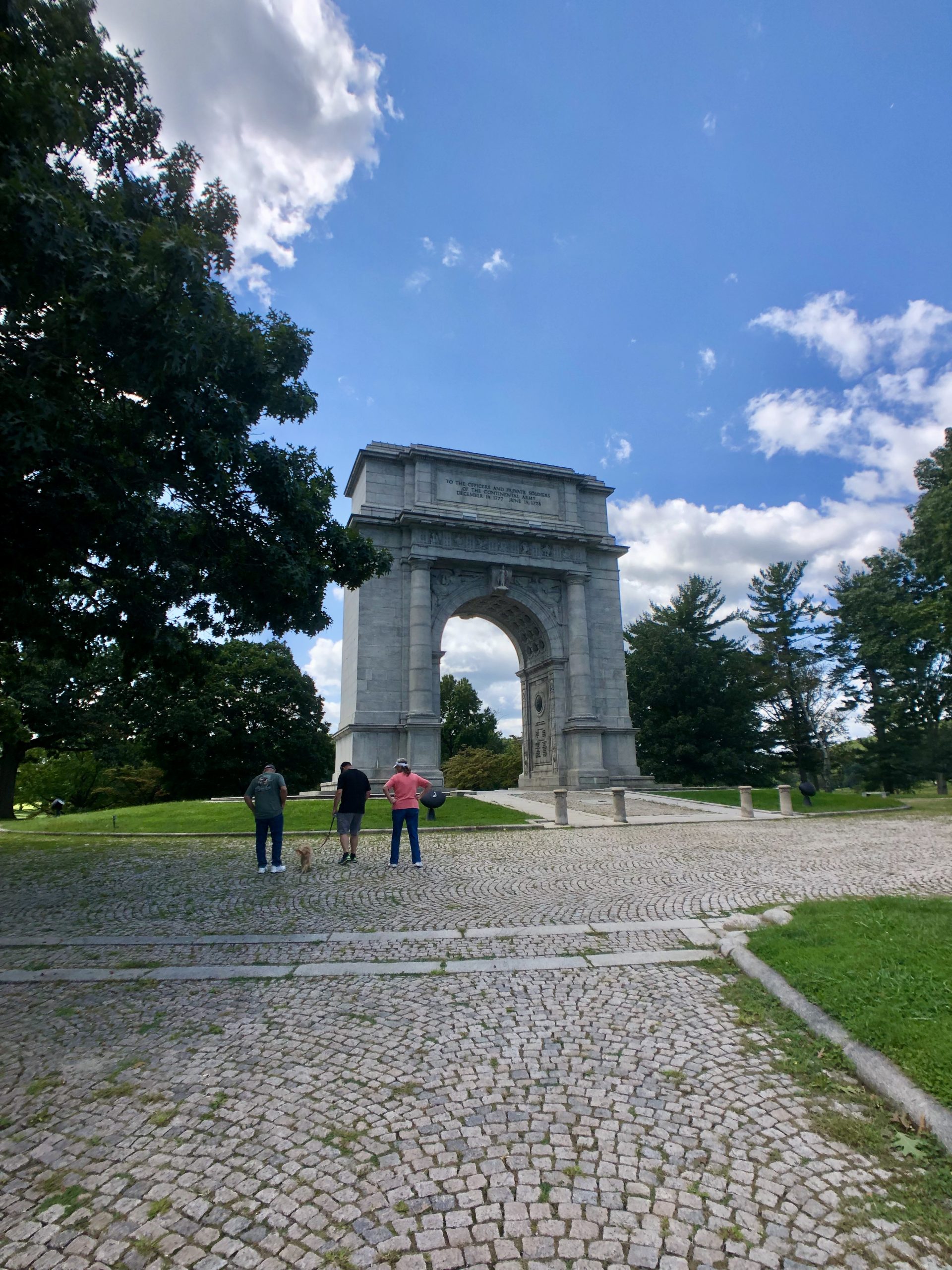
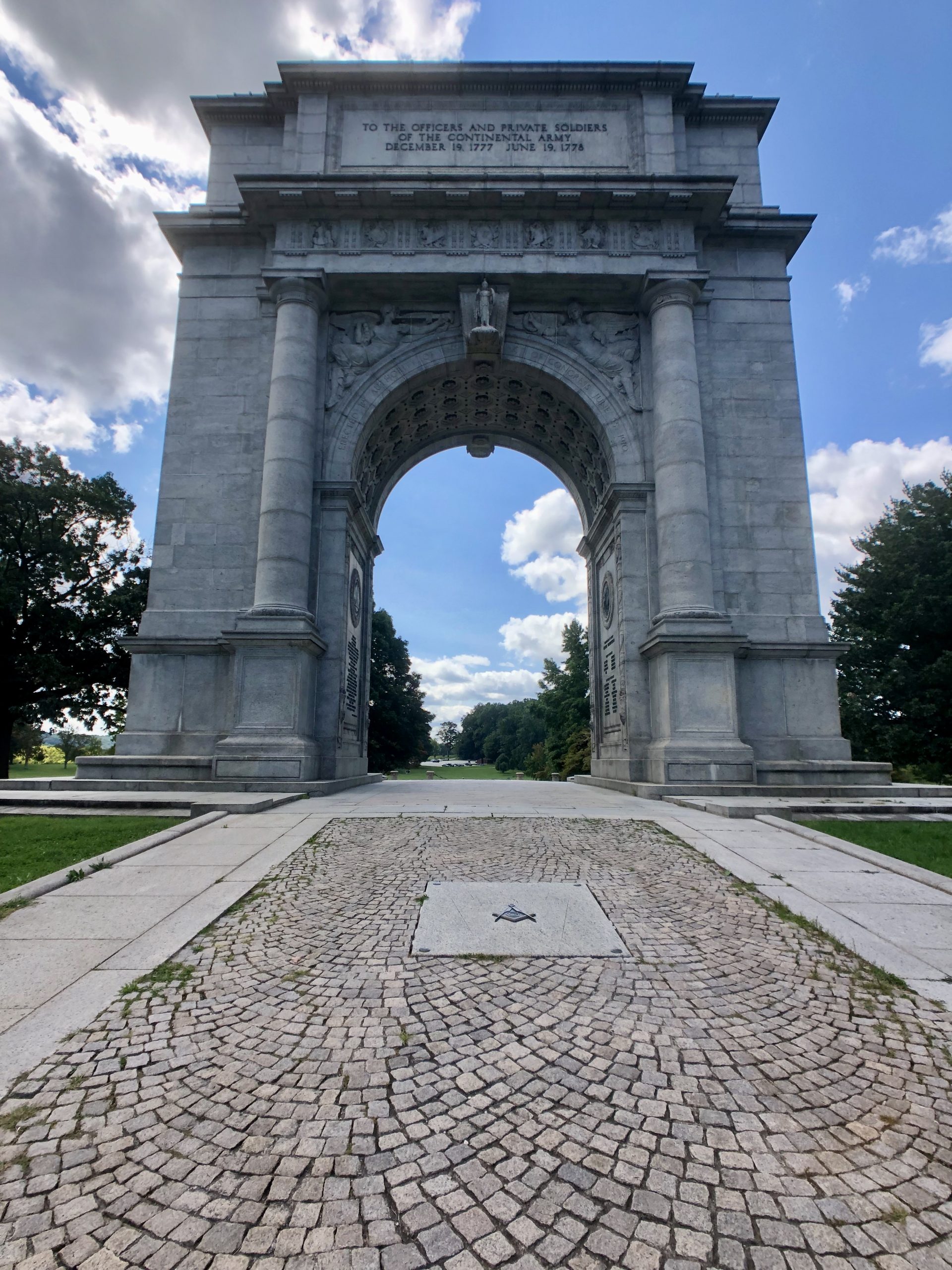
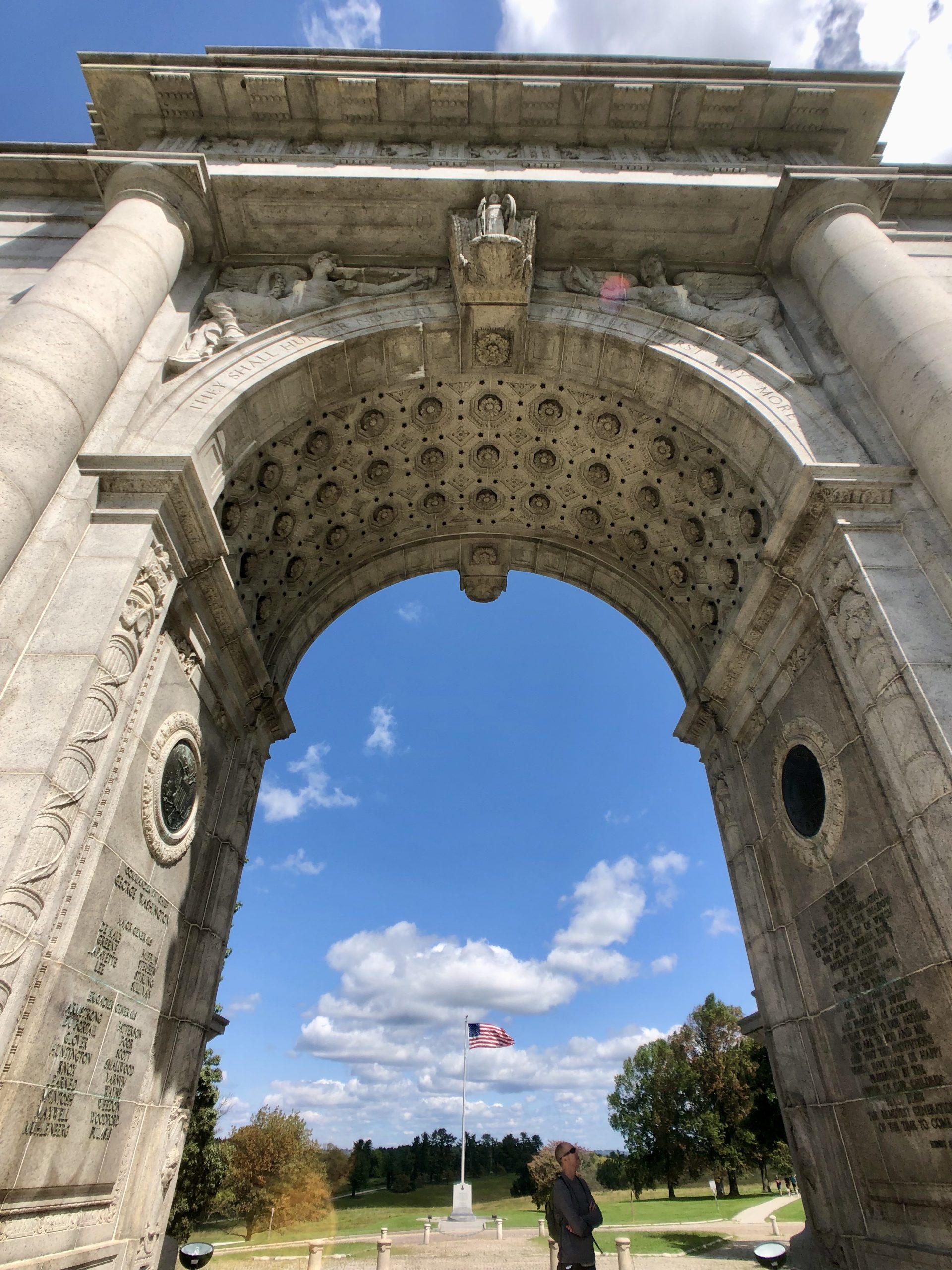
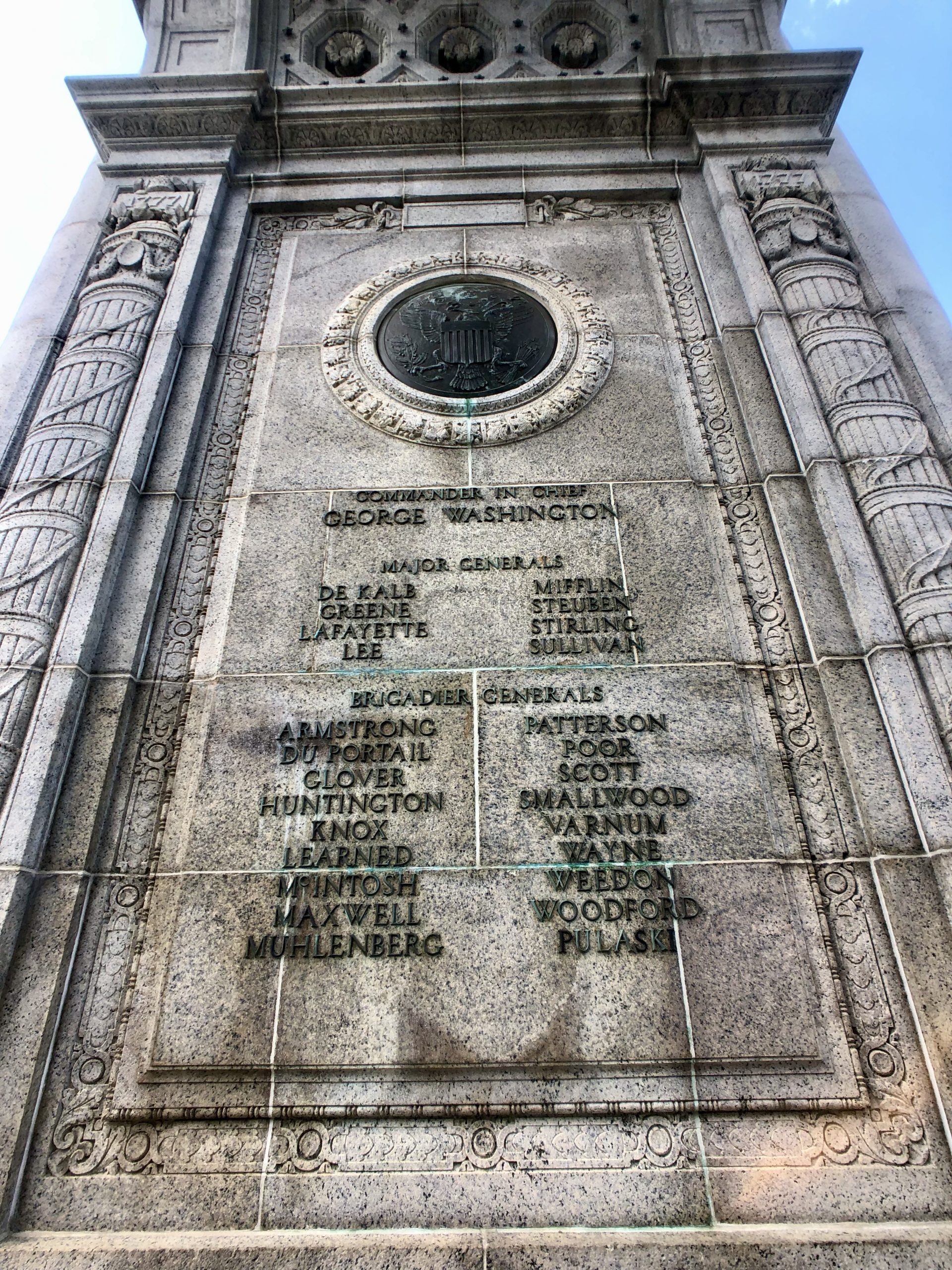
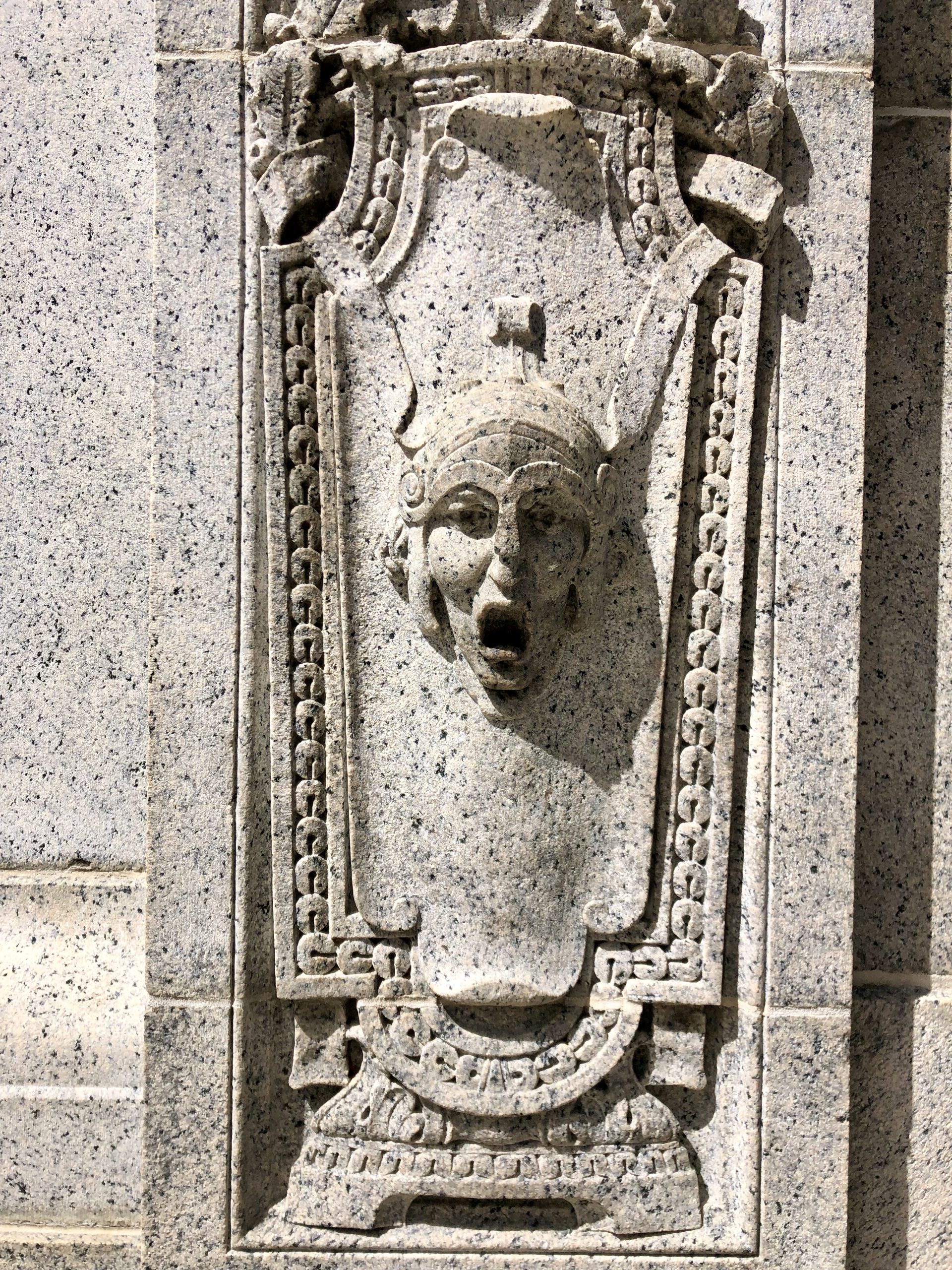
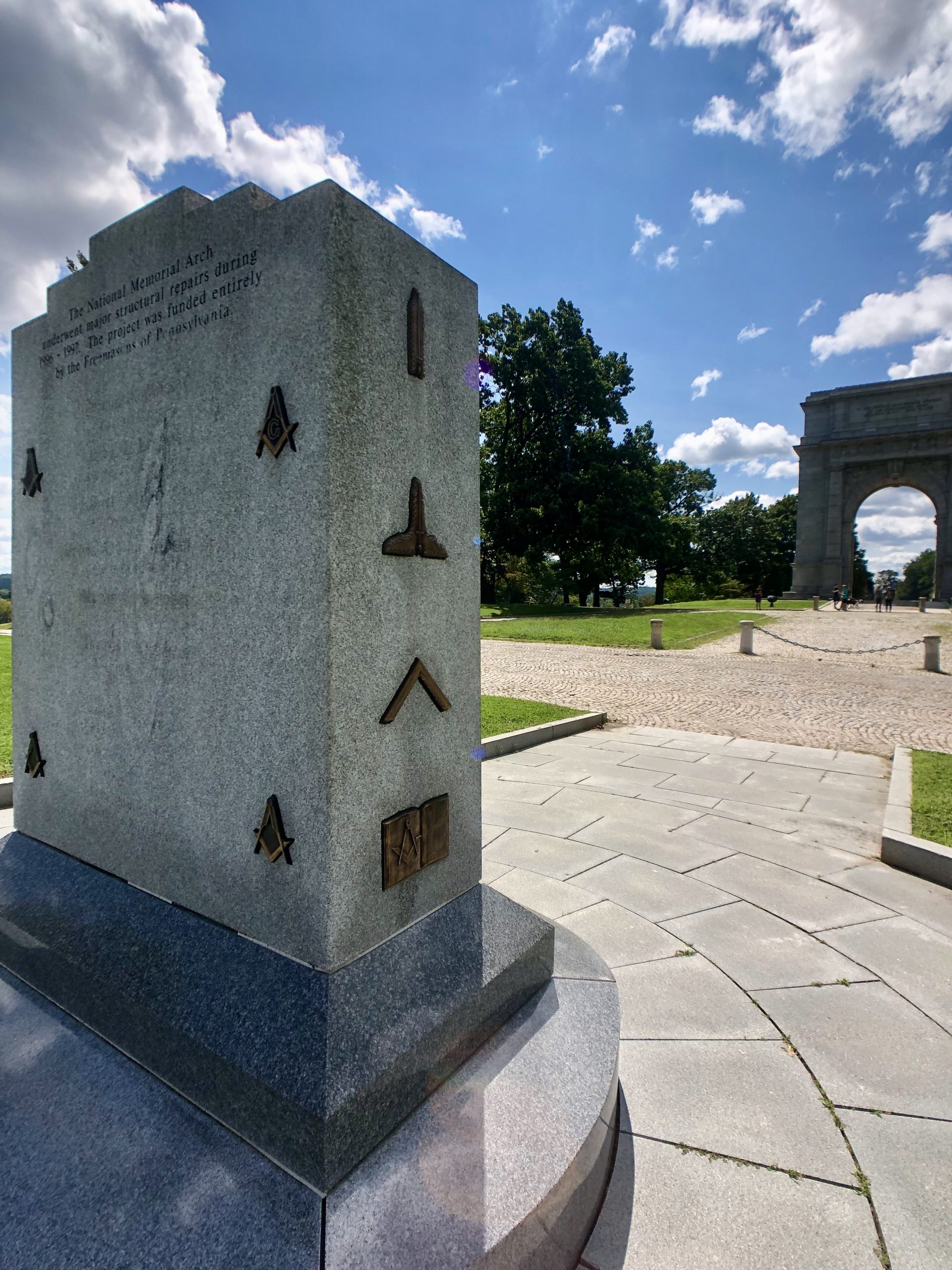
It continued to surprise us every time we saw fall colors along the way. We were here on September 10th and there were trees with their leaves turning.
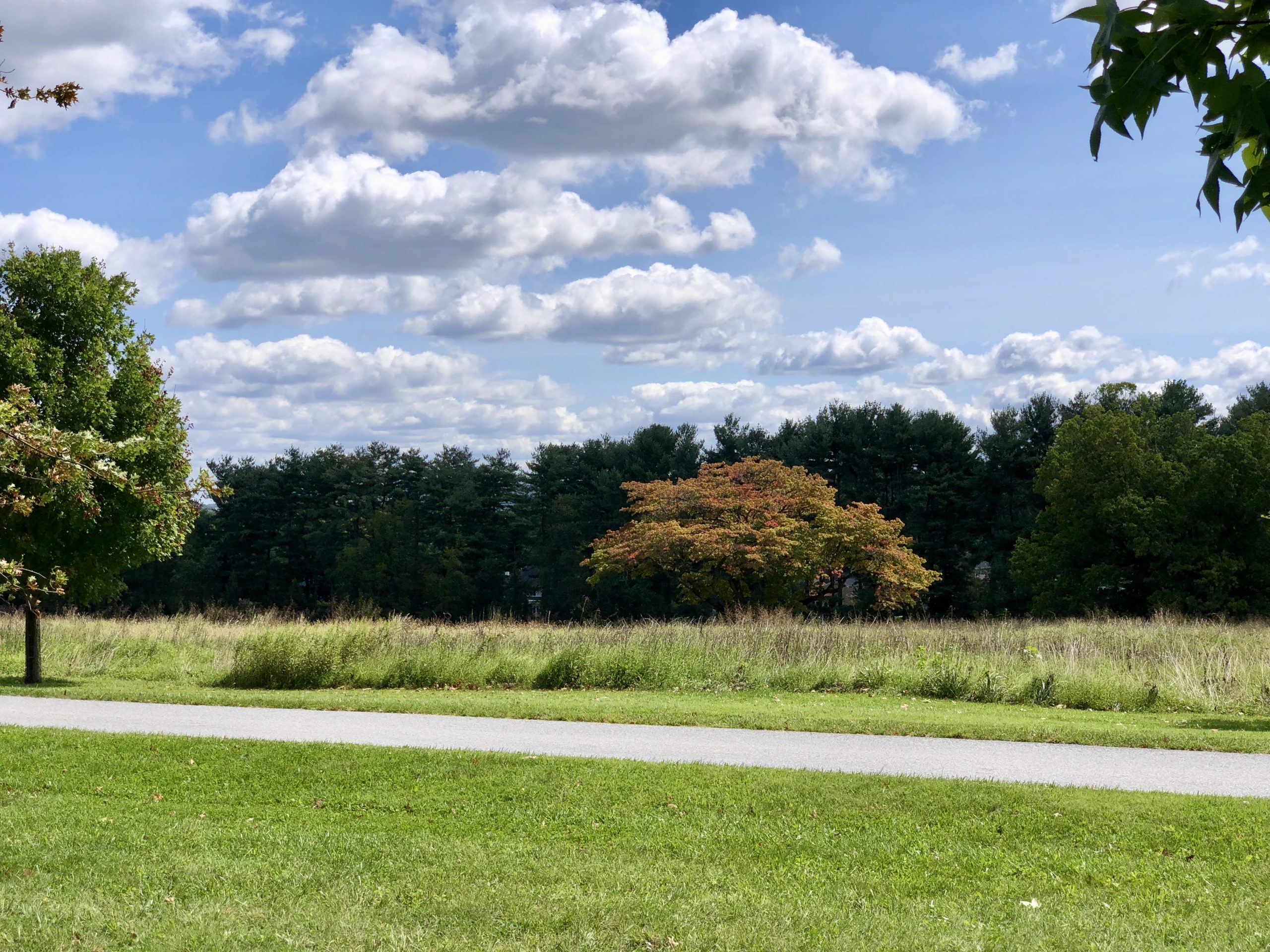
The next few slides provide some history of the area before, during, and after the Army showed up at this field.
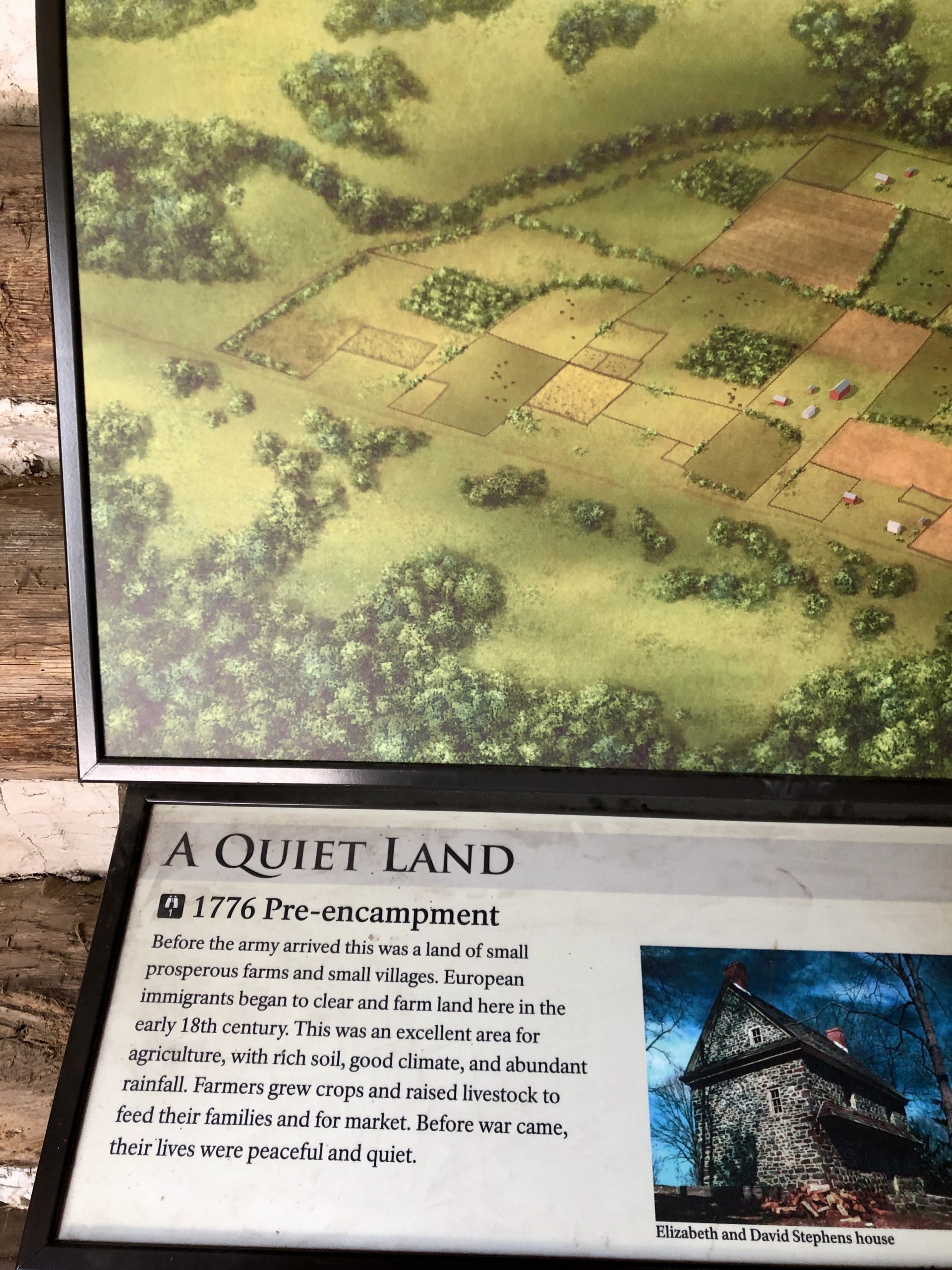
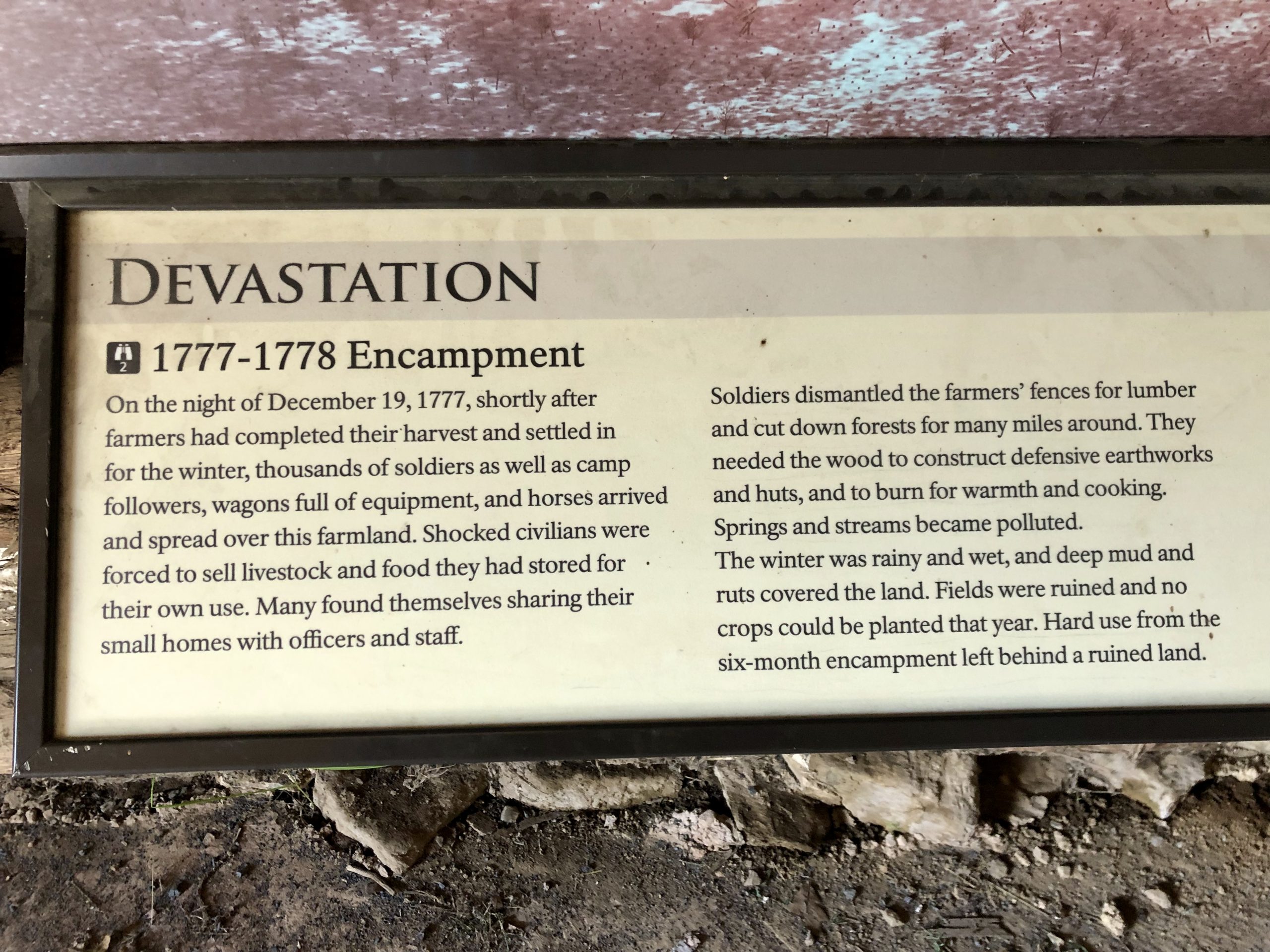
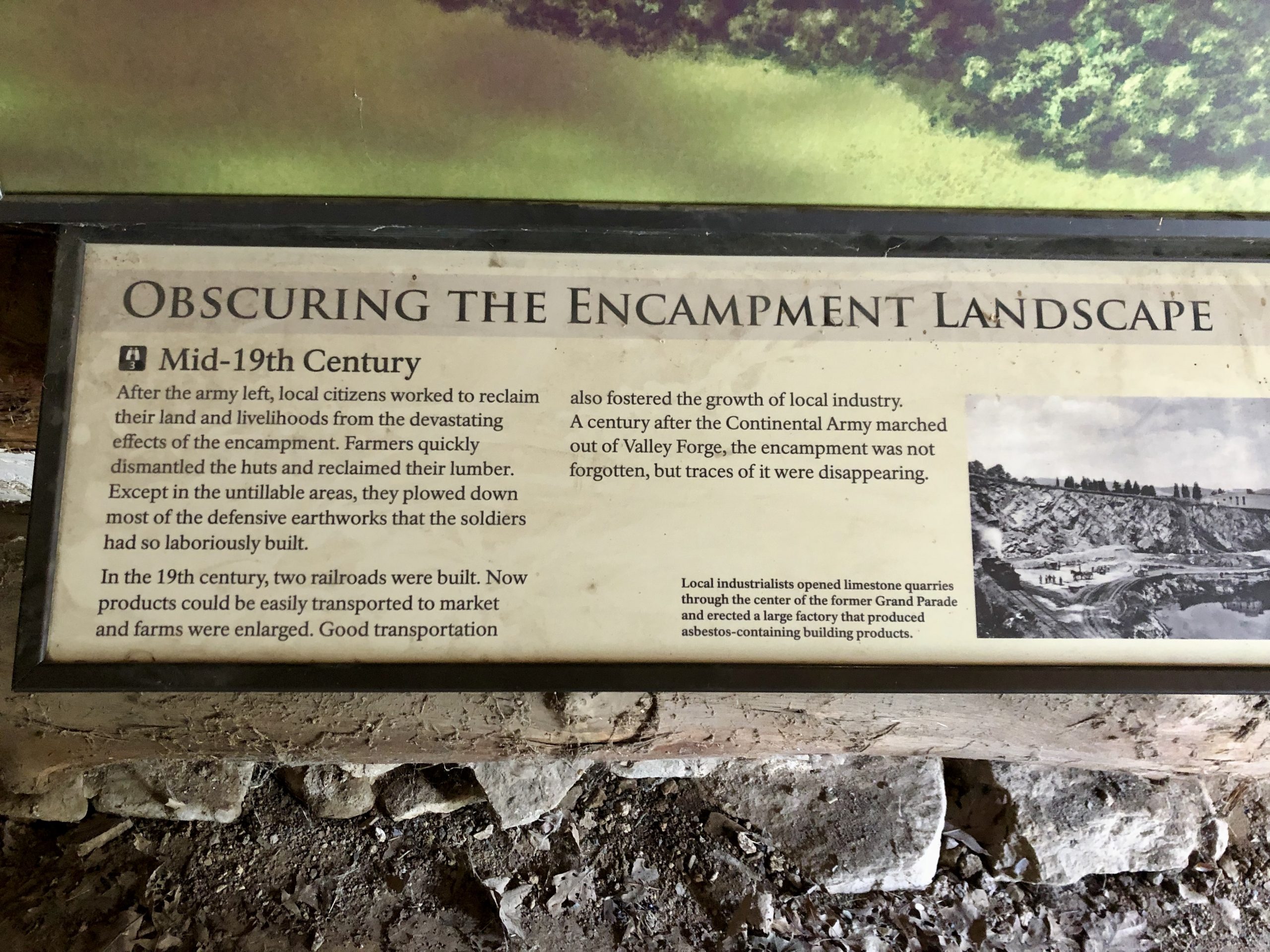
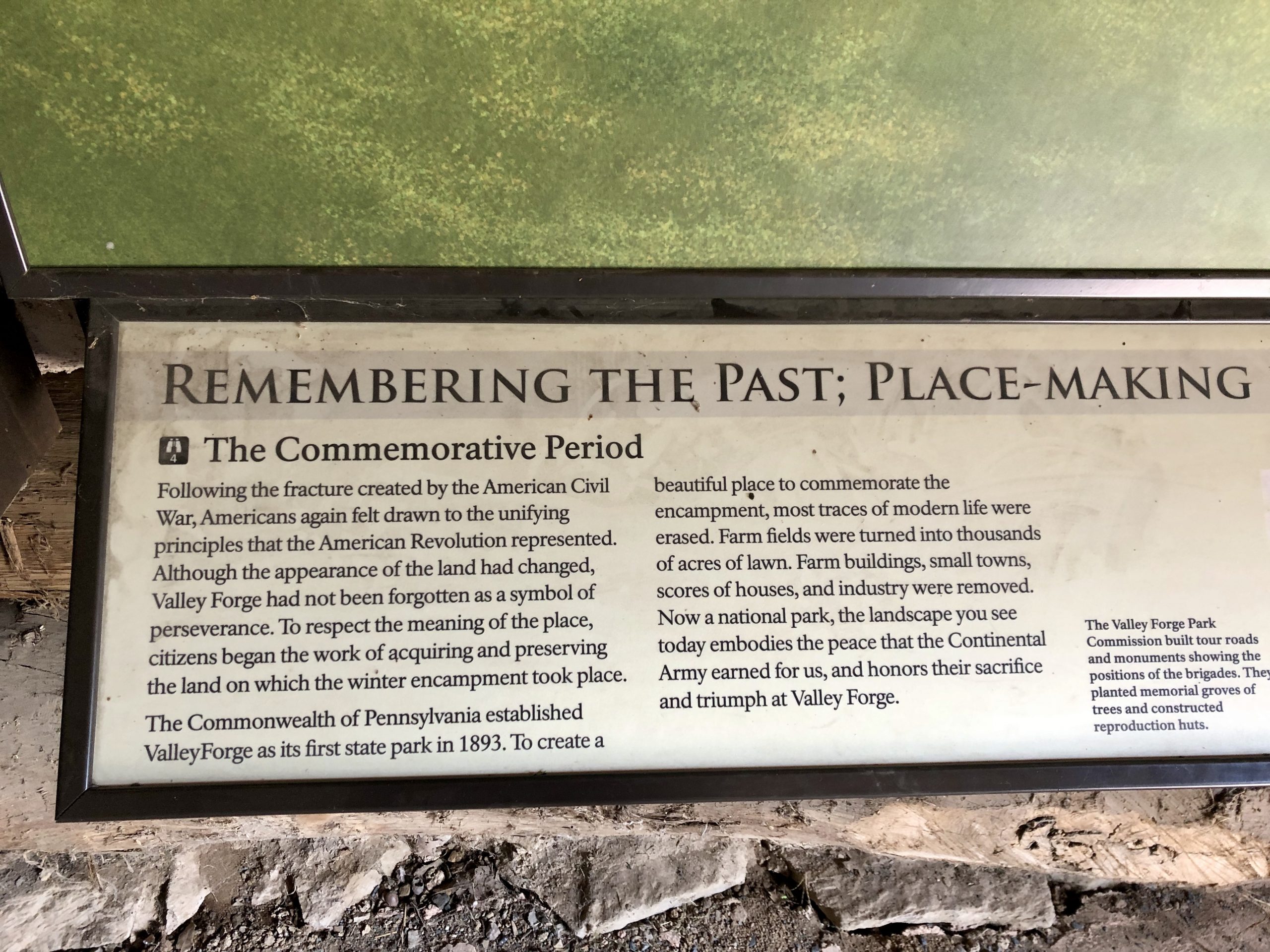
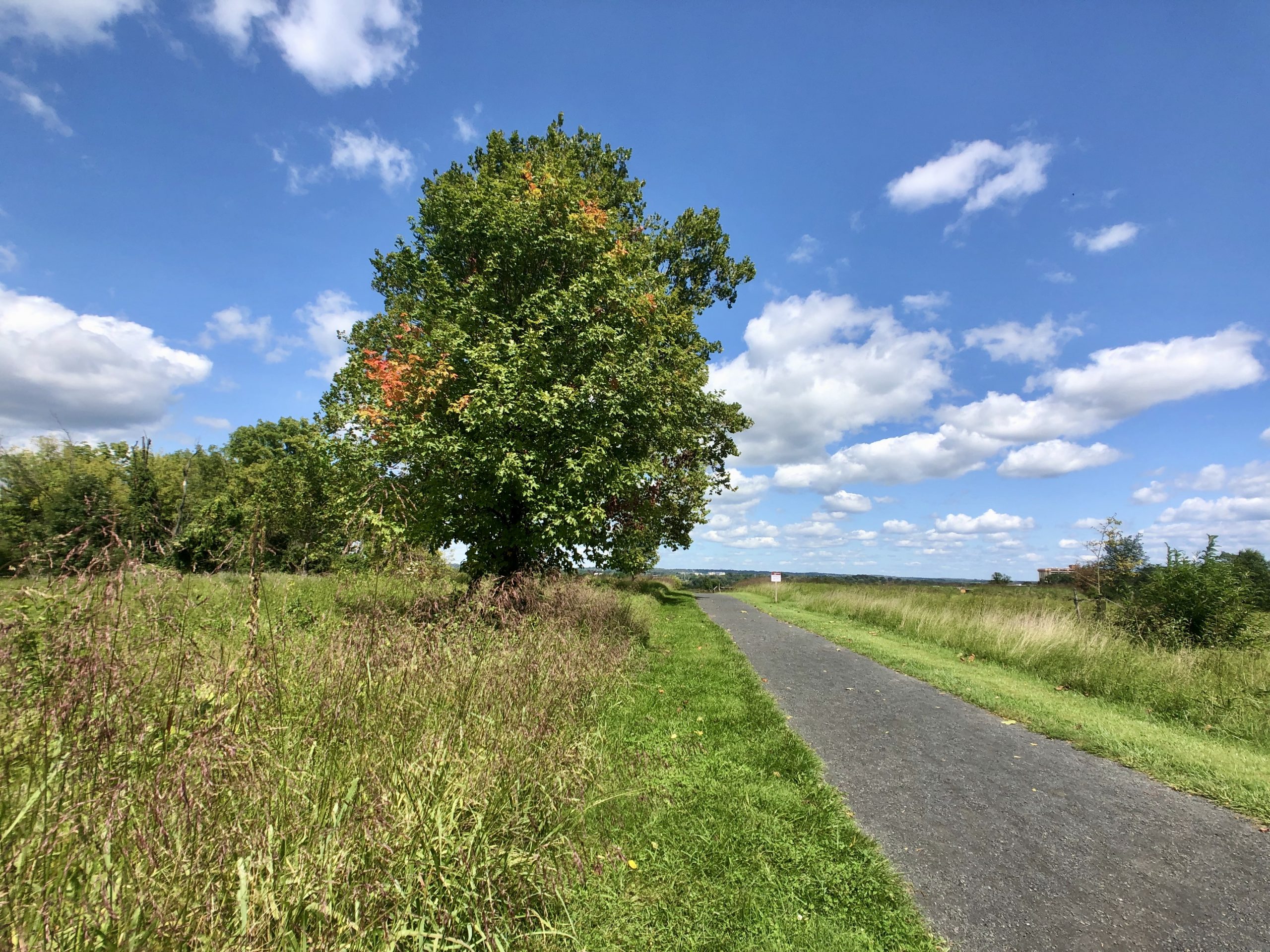
One of the reasons we enjoy our National Parks is that you get to experience the past. Before our visit to Valley Forge neither of us had heard of a Redoubt, which, according to Merriam-Webster, is a small usually temporary enclosed defensive work.
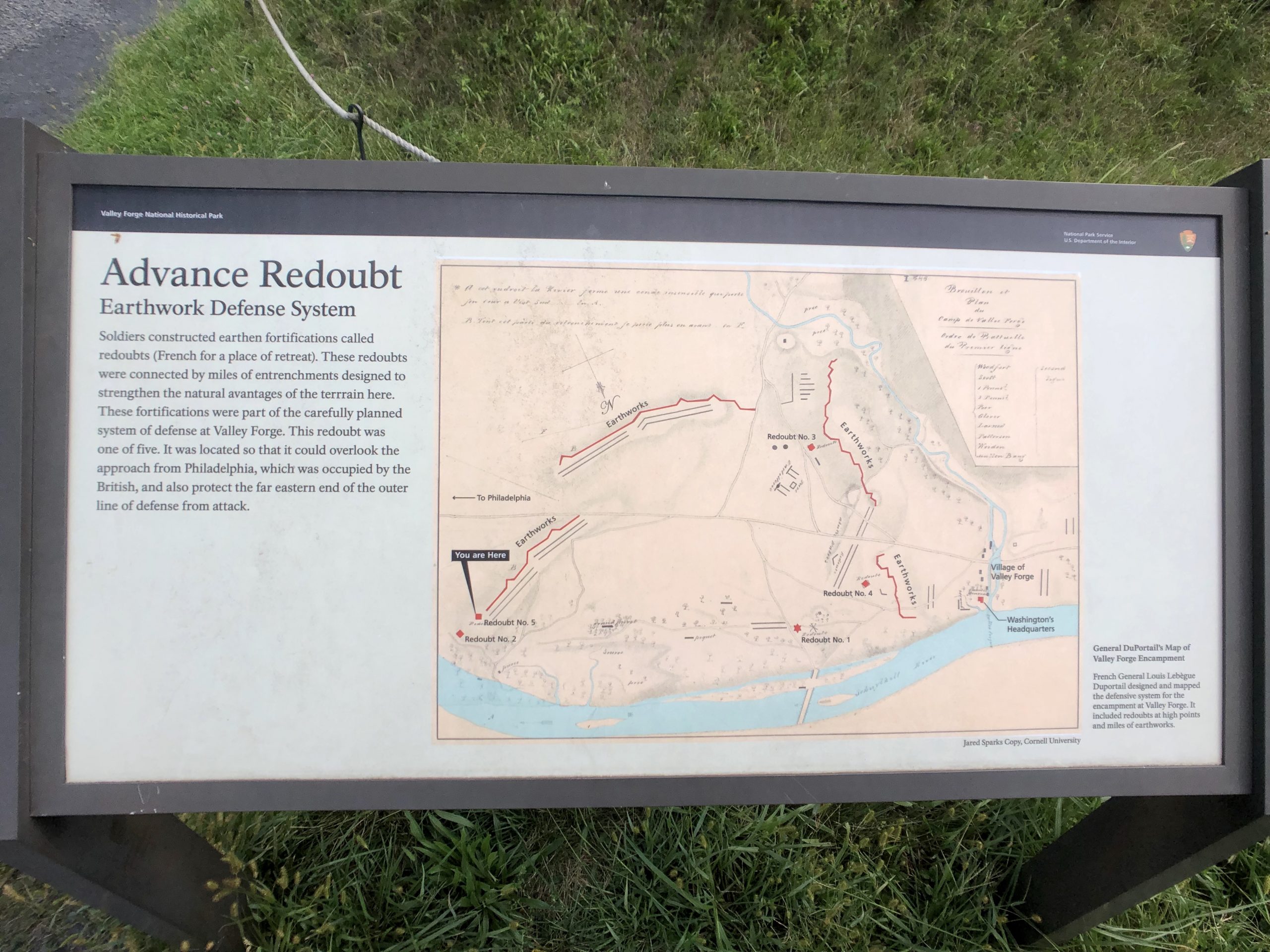
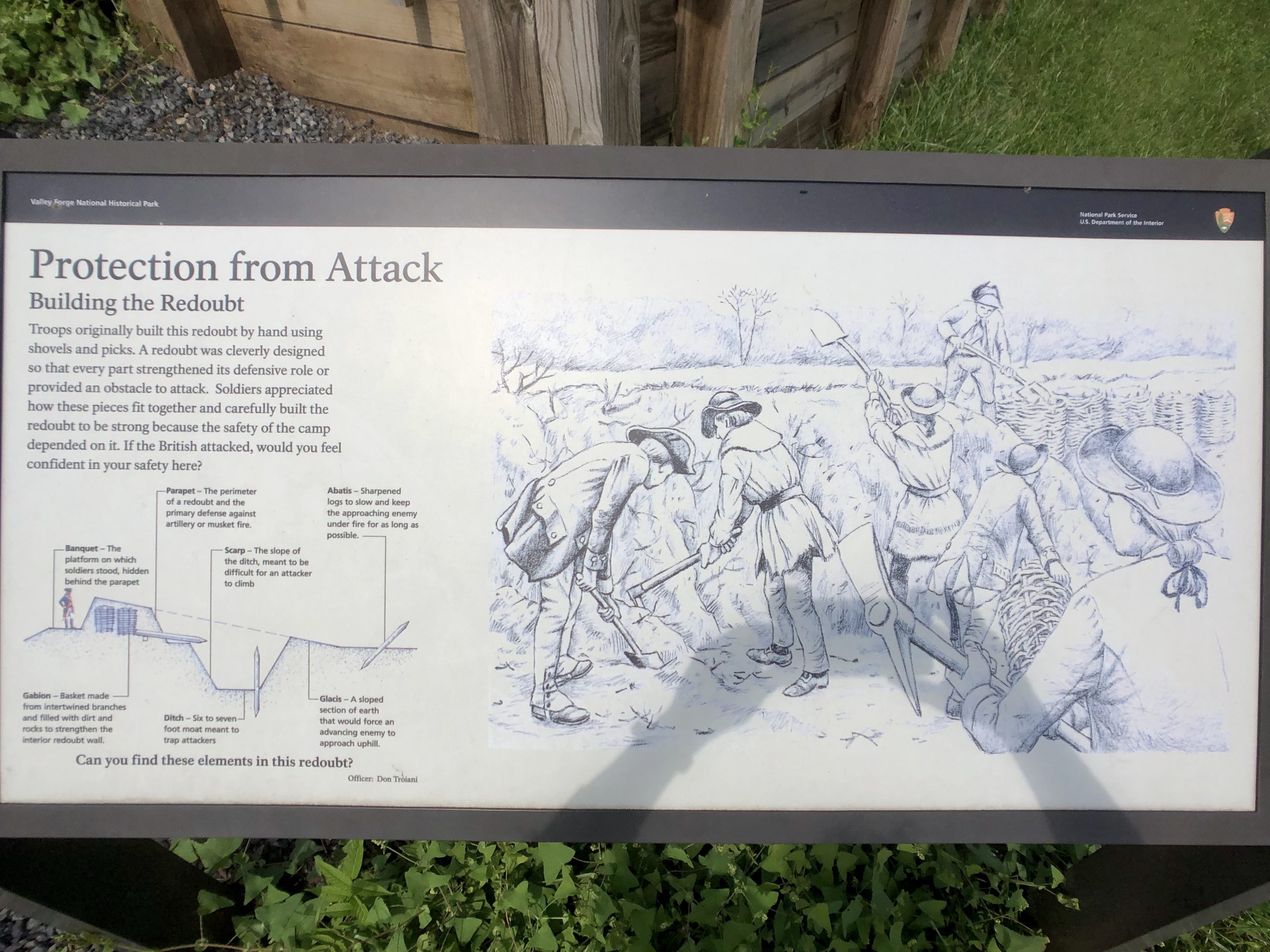
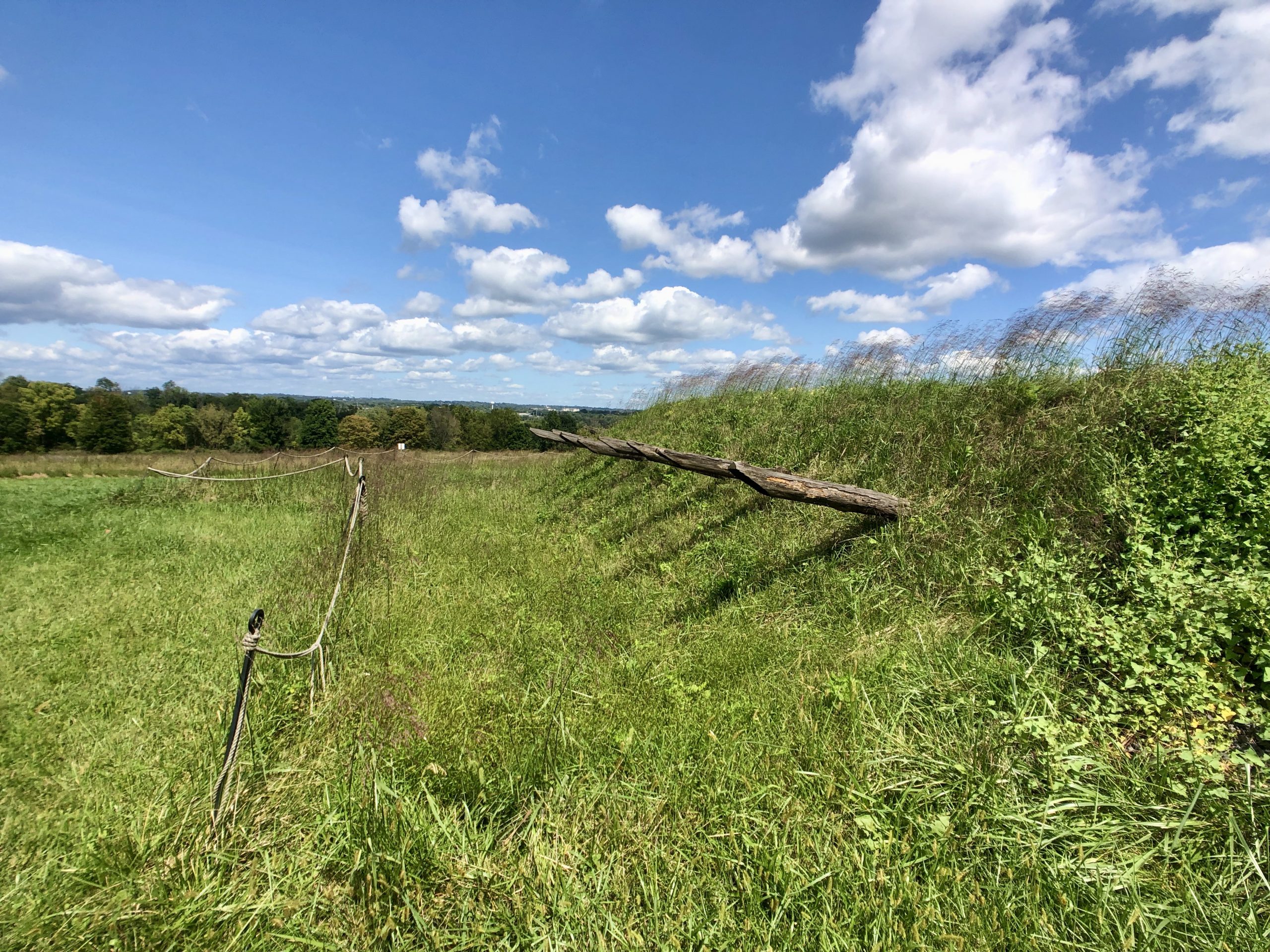
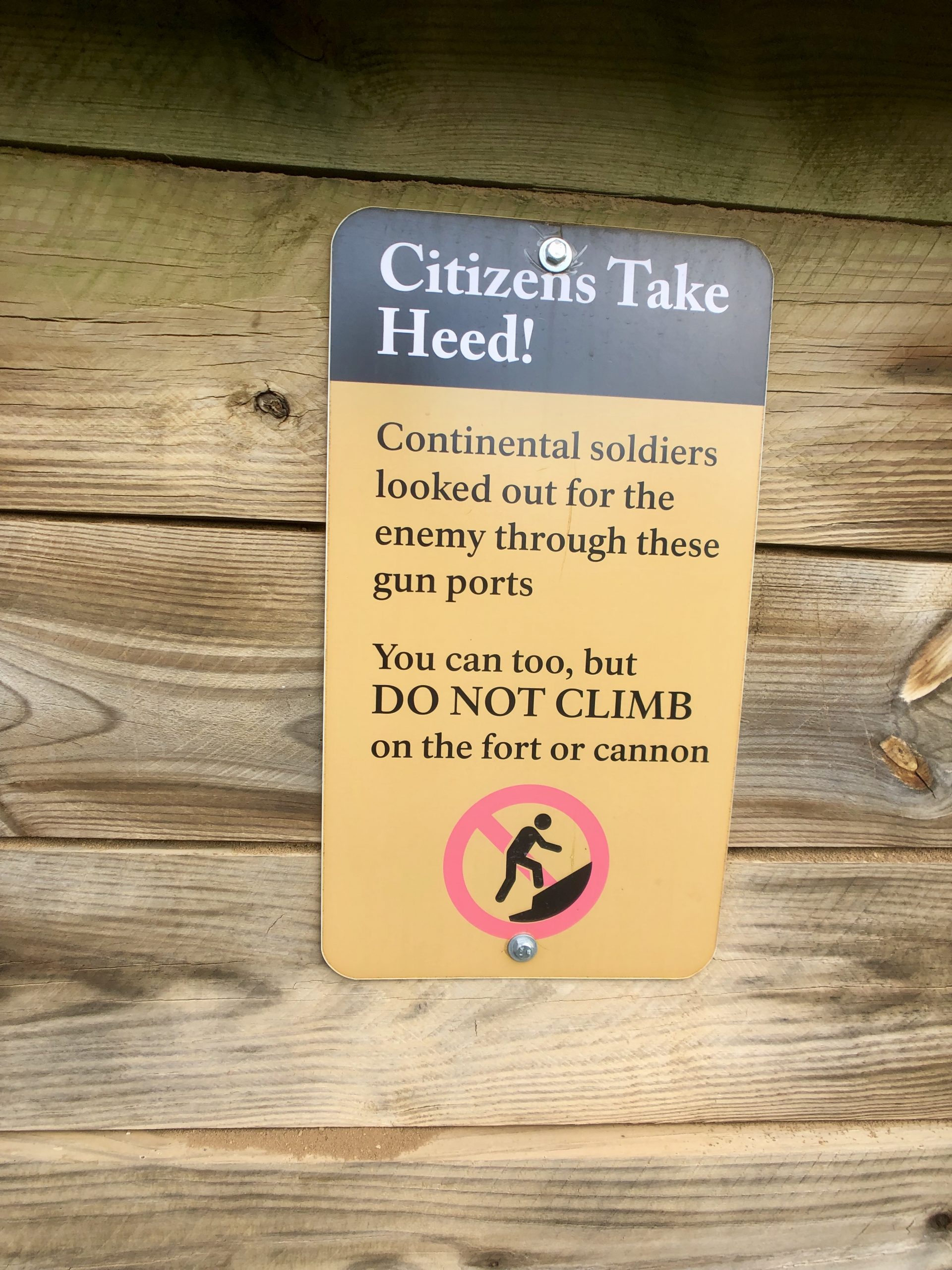
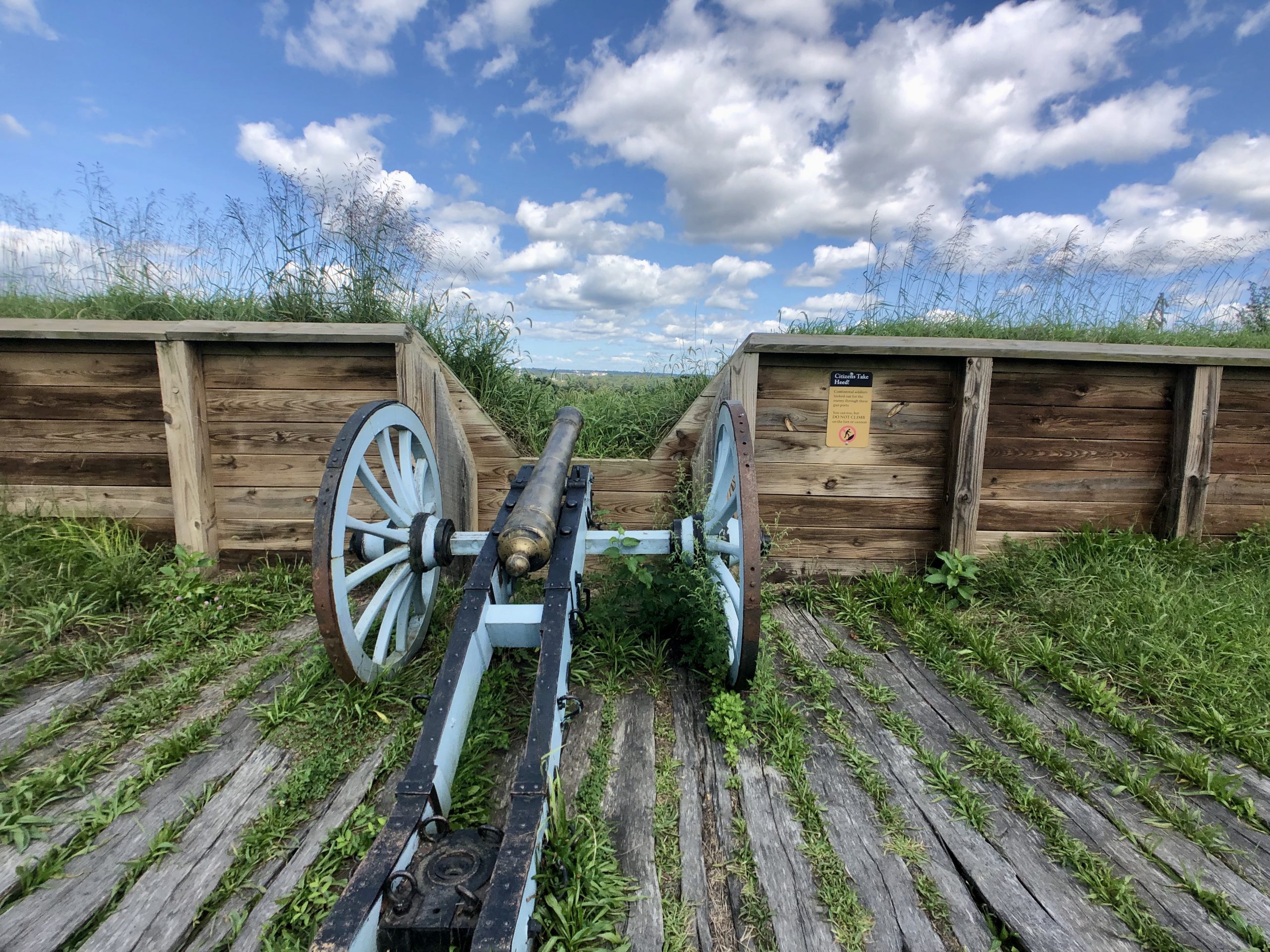
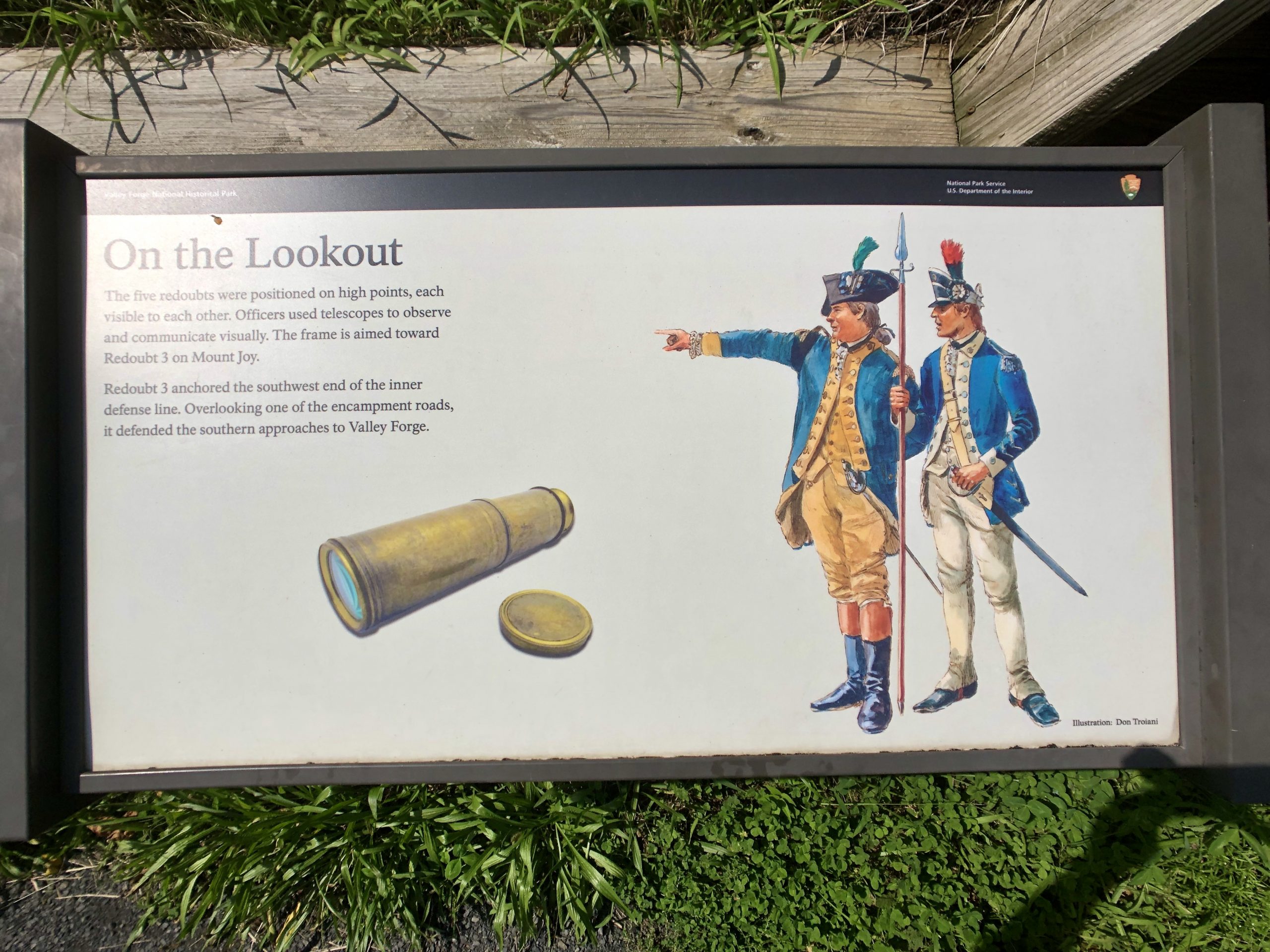
“General Washington and his closest aides lived in a two-story stone house near Valley Forge Creek.” – History.com
The NPS provides tours of this home, however, due to Covid-19, the house was closed.
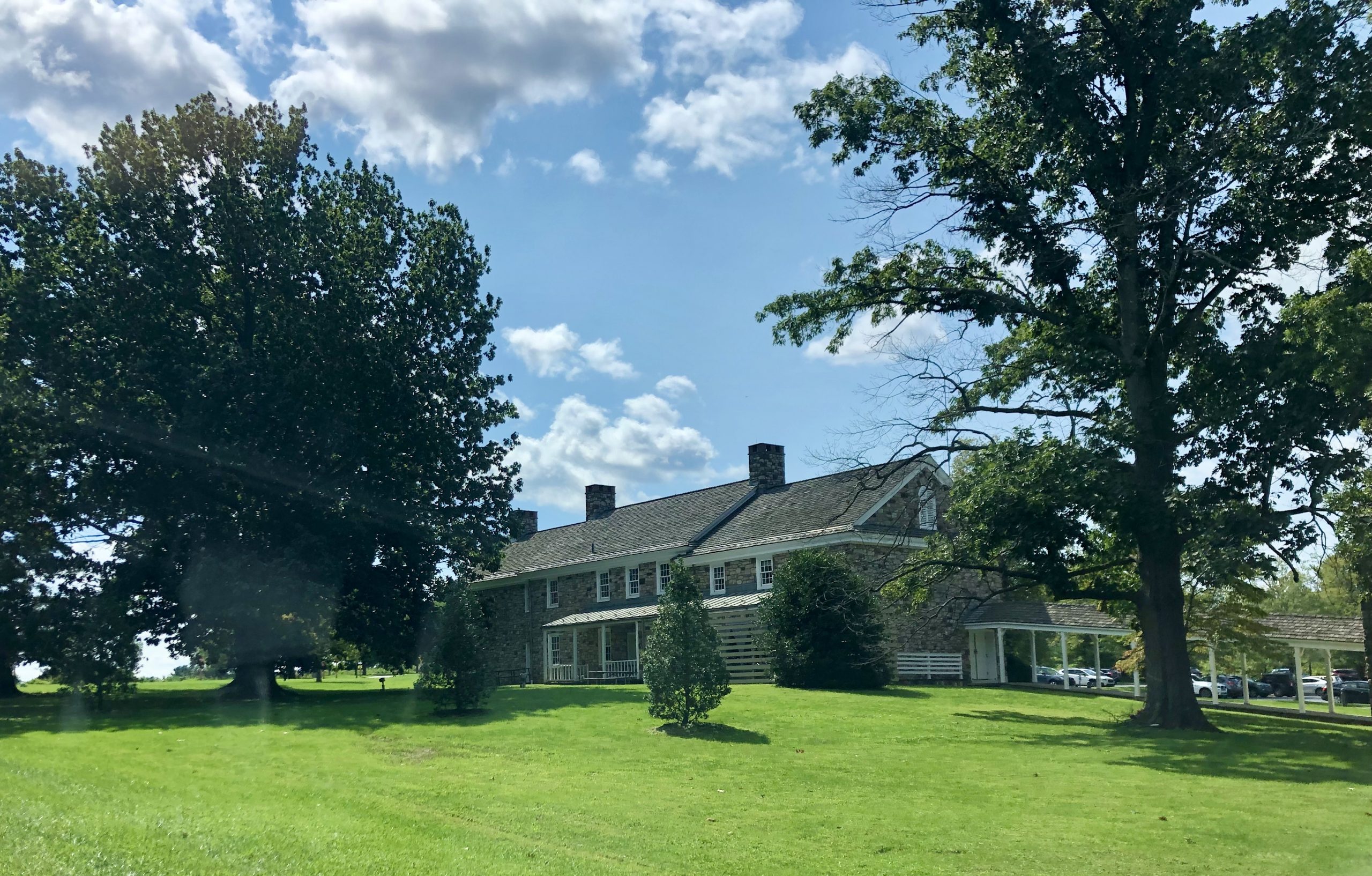
We are happy we stopped here, it was interesting to read about and see everything in person. We’ve said it before (and will probably say it again in the future), we have learned so much more visiting our National Parks than we ever did from studying history in school.

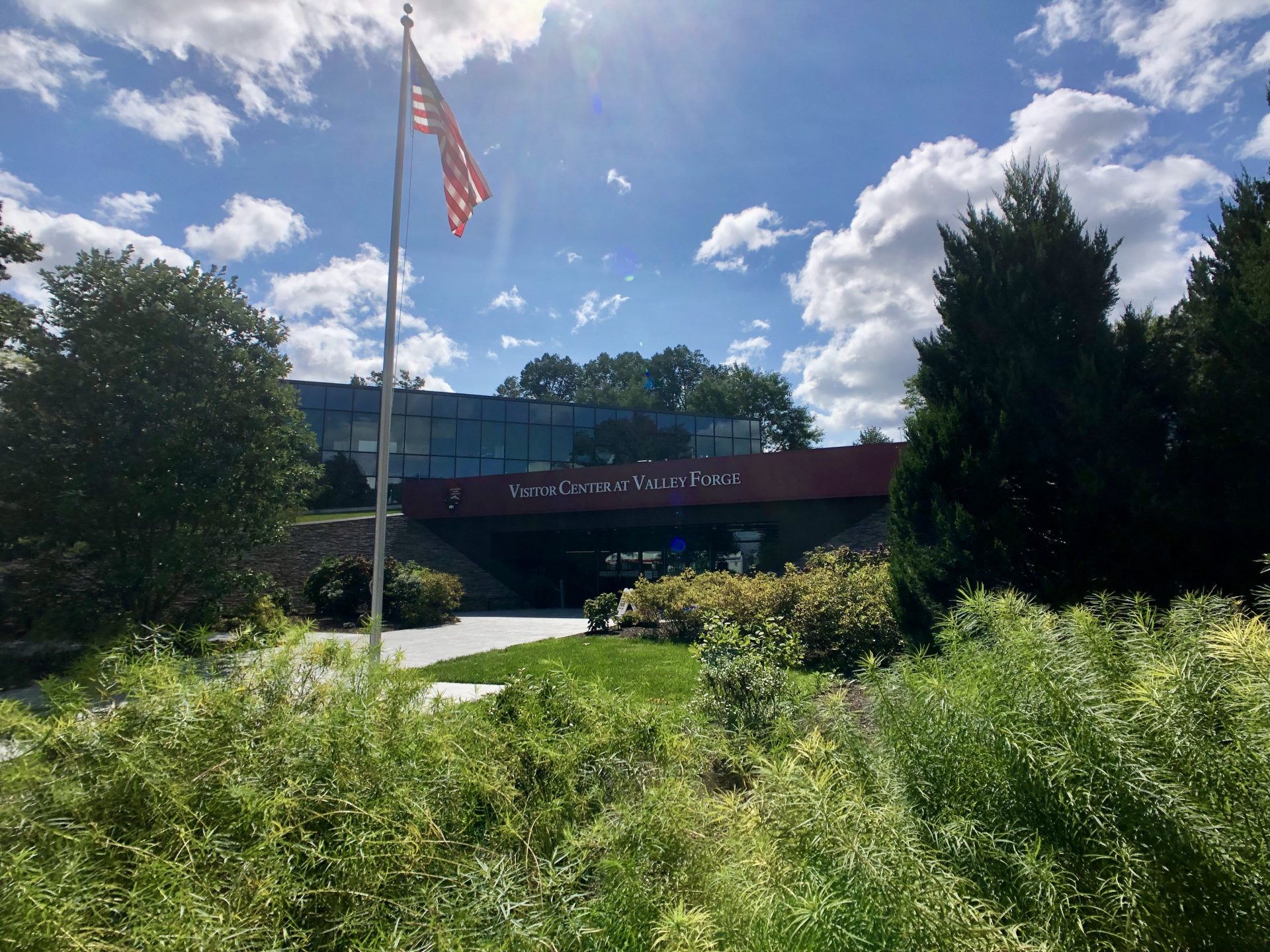
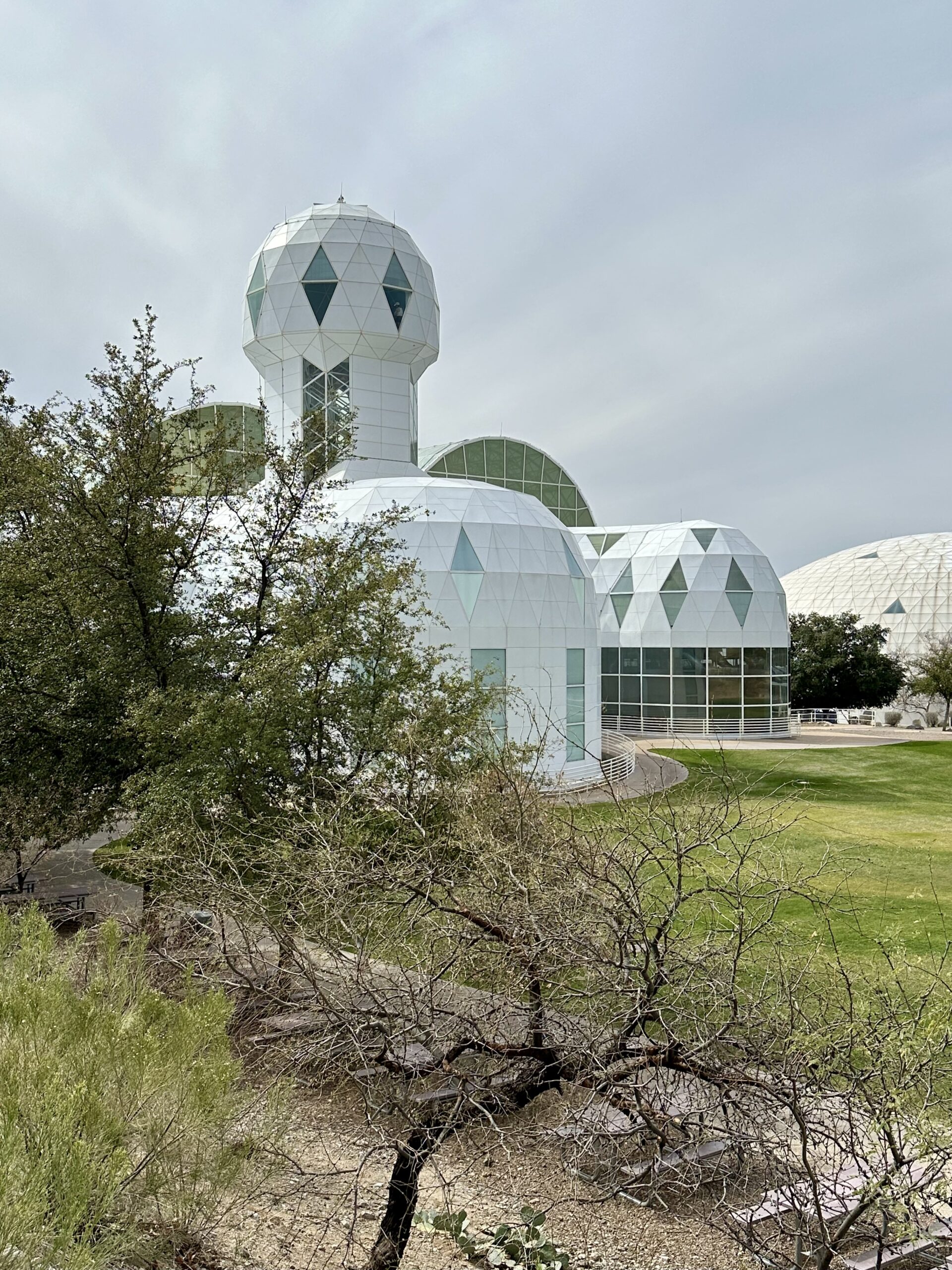
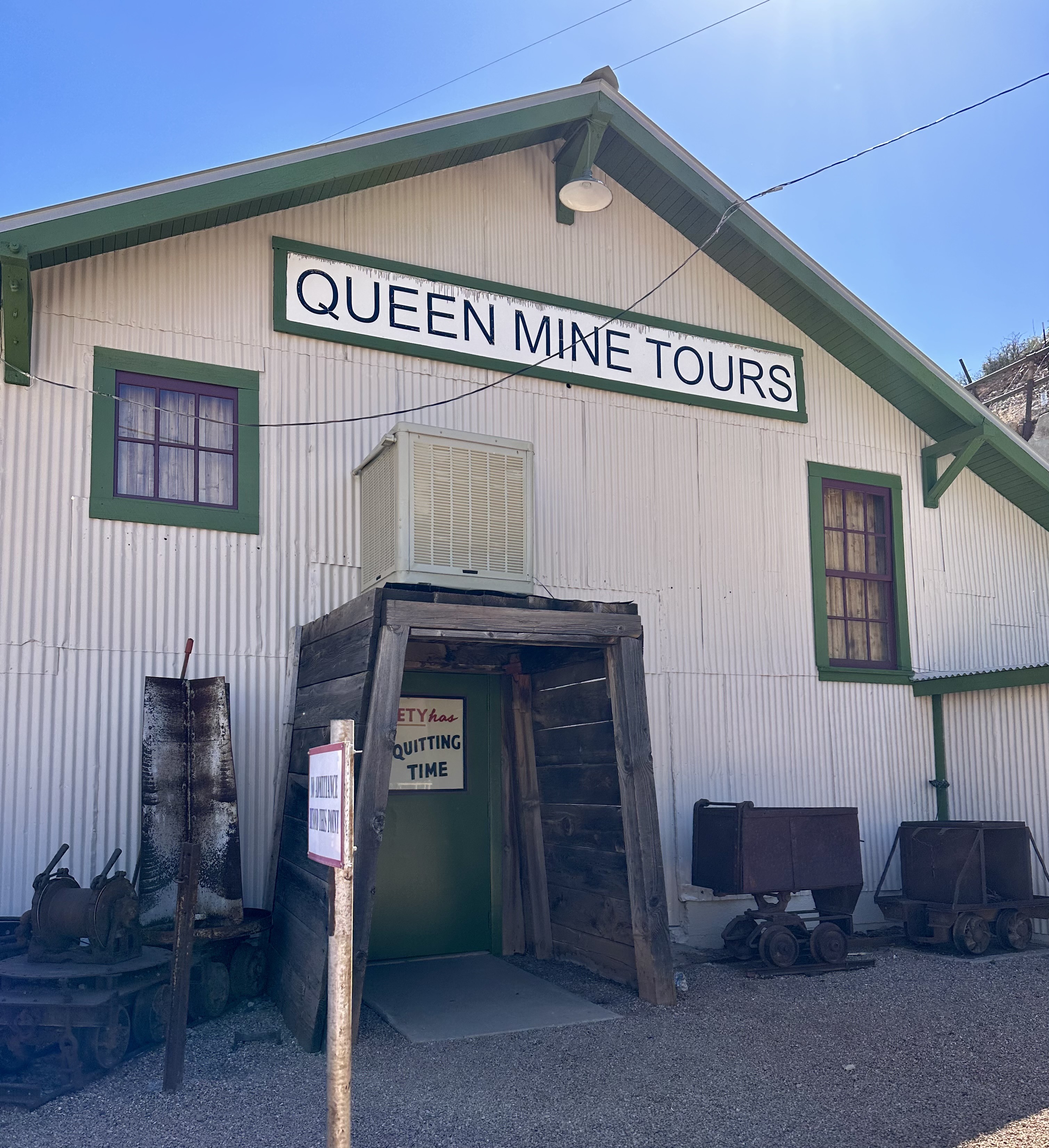
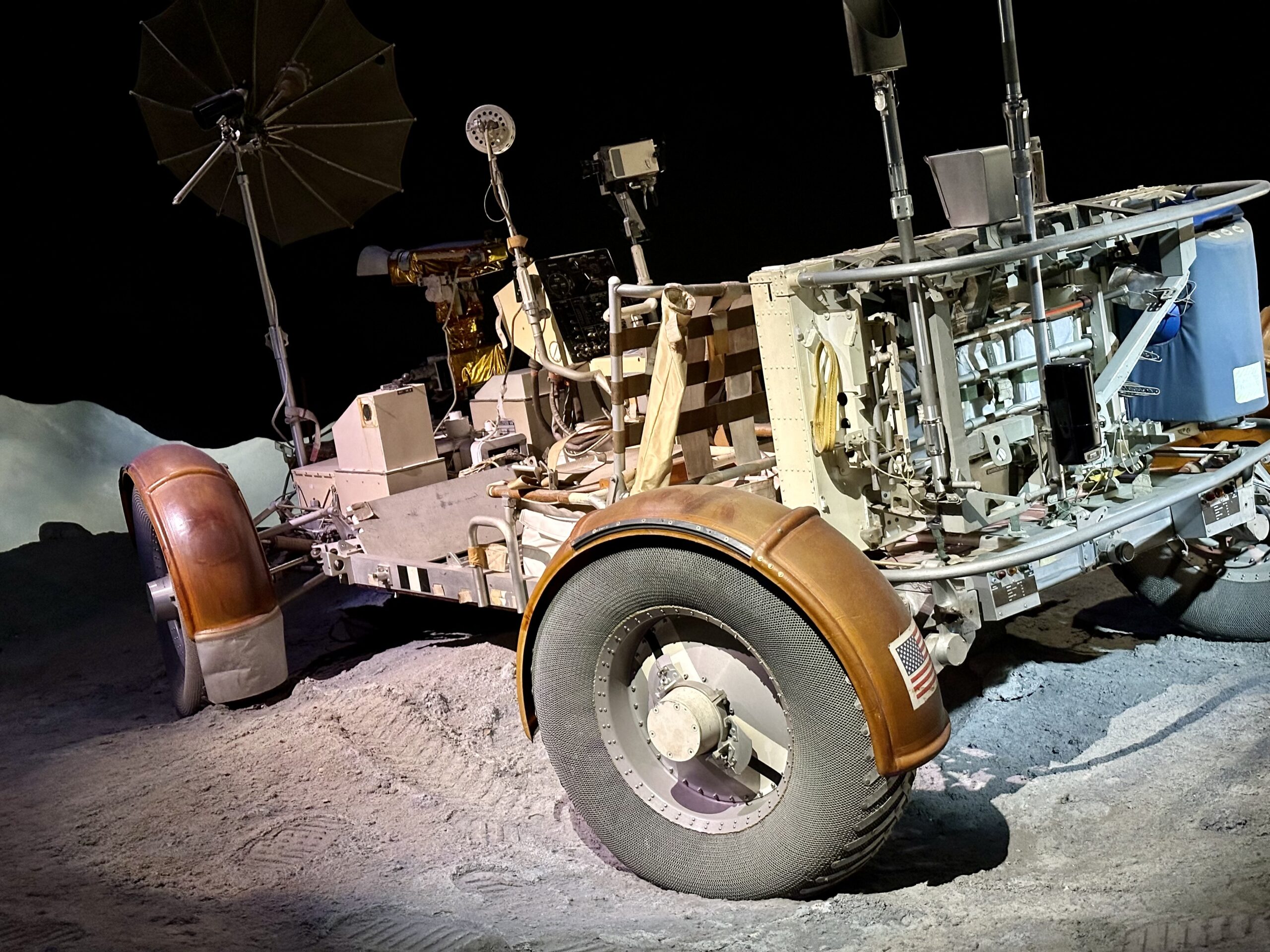
Woah! I’m really loving the template/theme of this
website. It’s simple, yet effective. A lot of times it’s difficult to get that “perfect balance”
between usability and visual appearance. I must say that you’ve done a great job with this.
Also, the blog loads extremely quick for me on Safari. Superb Blog!